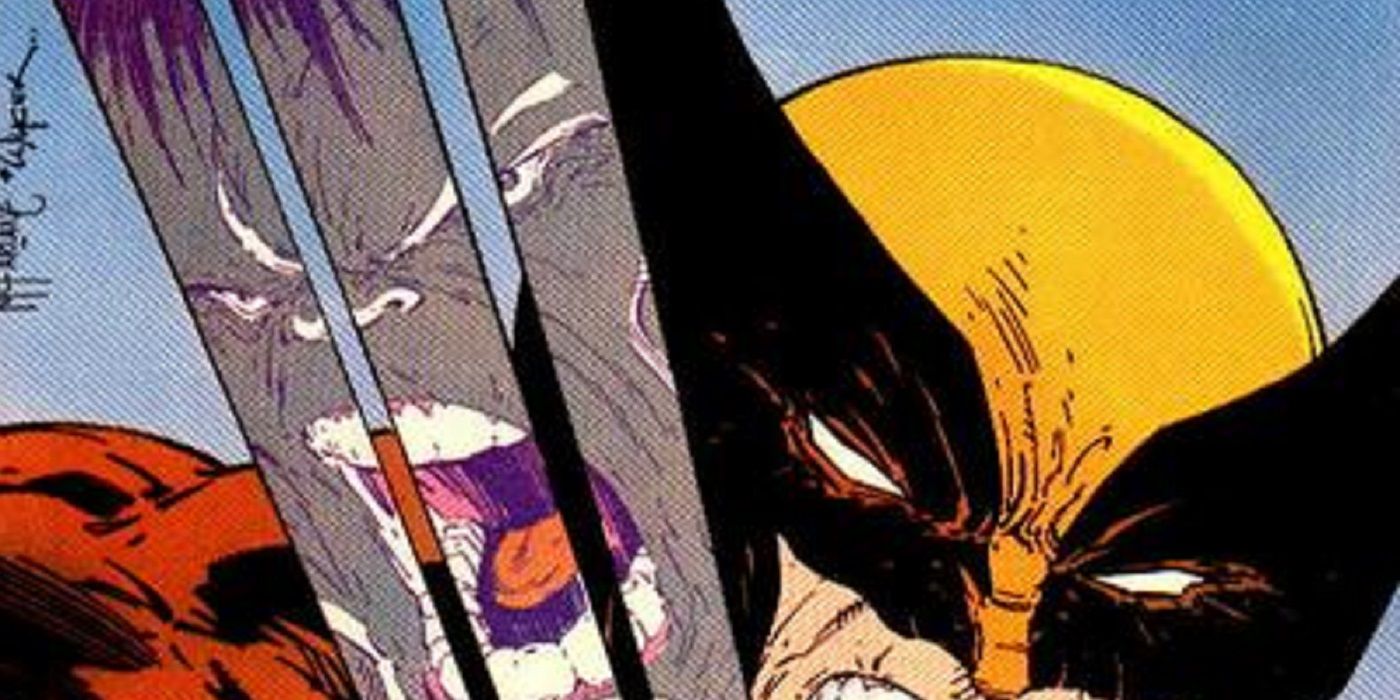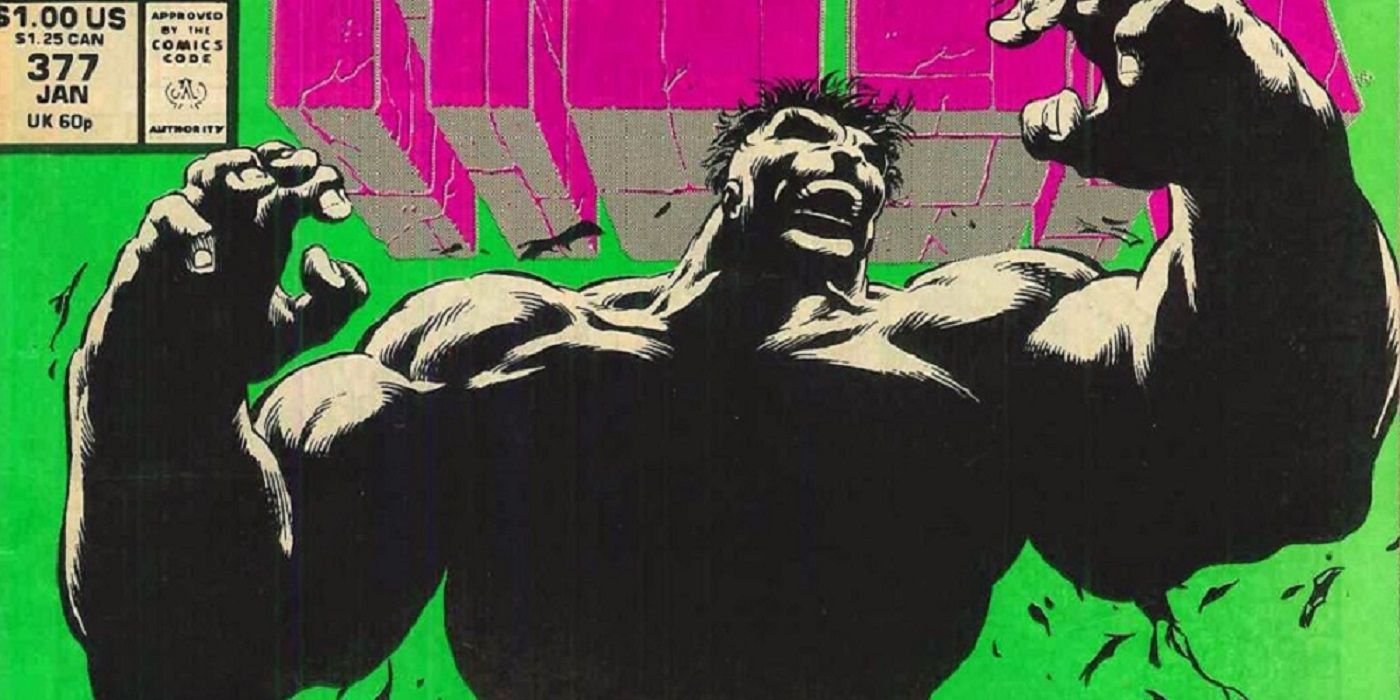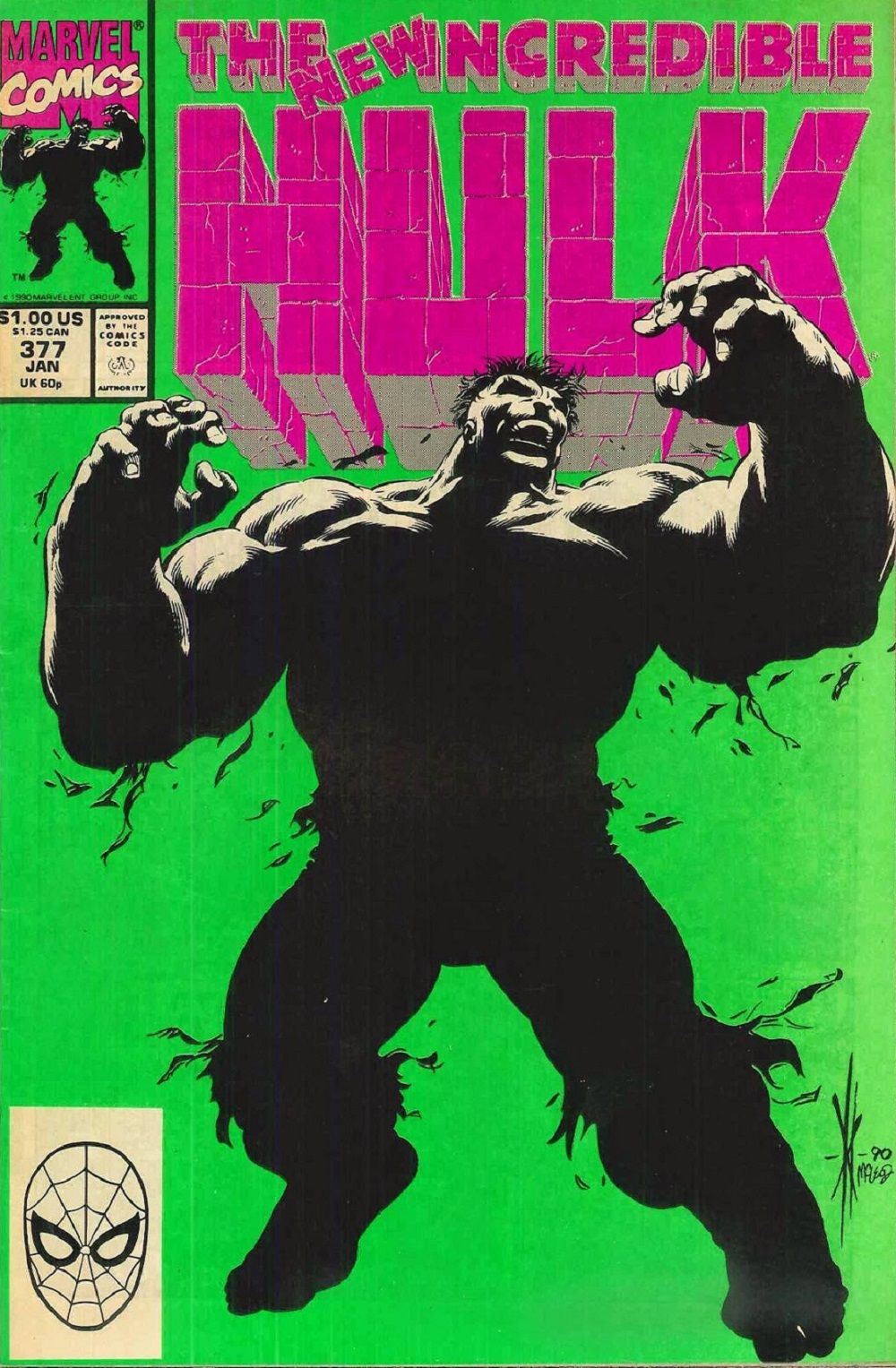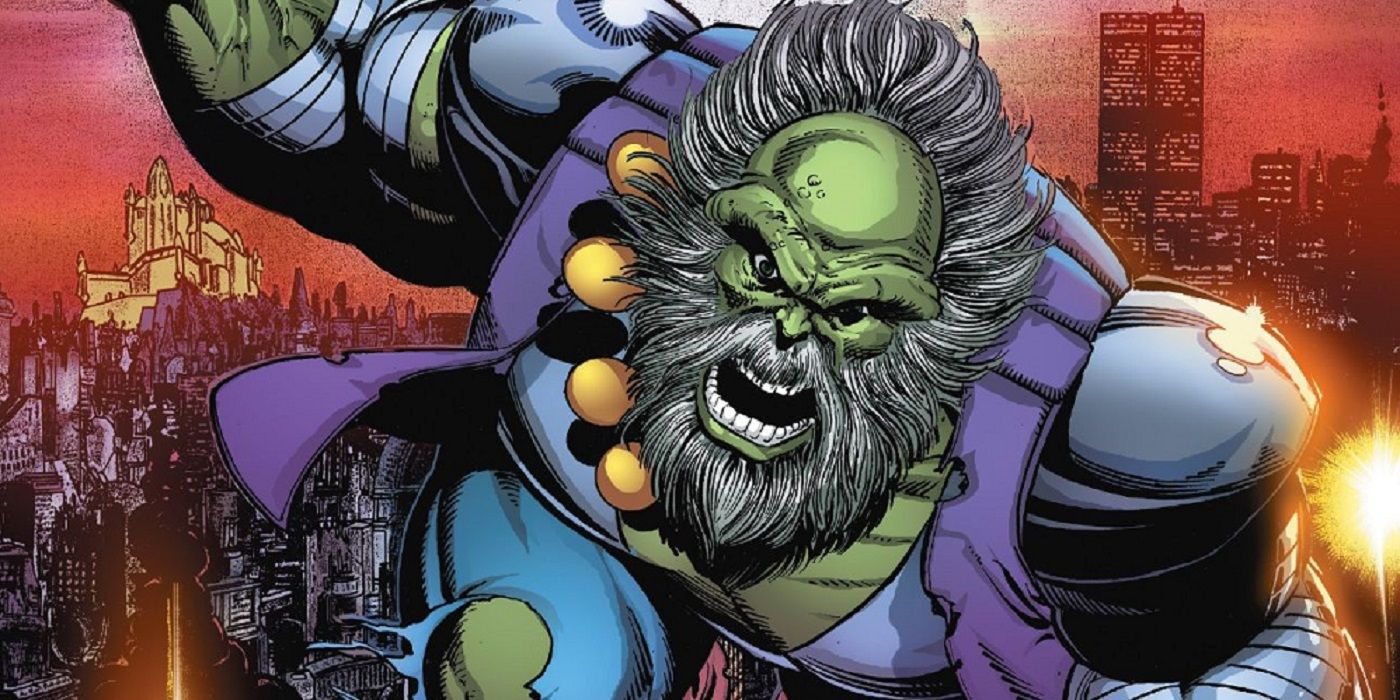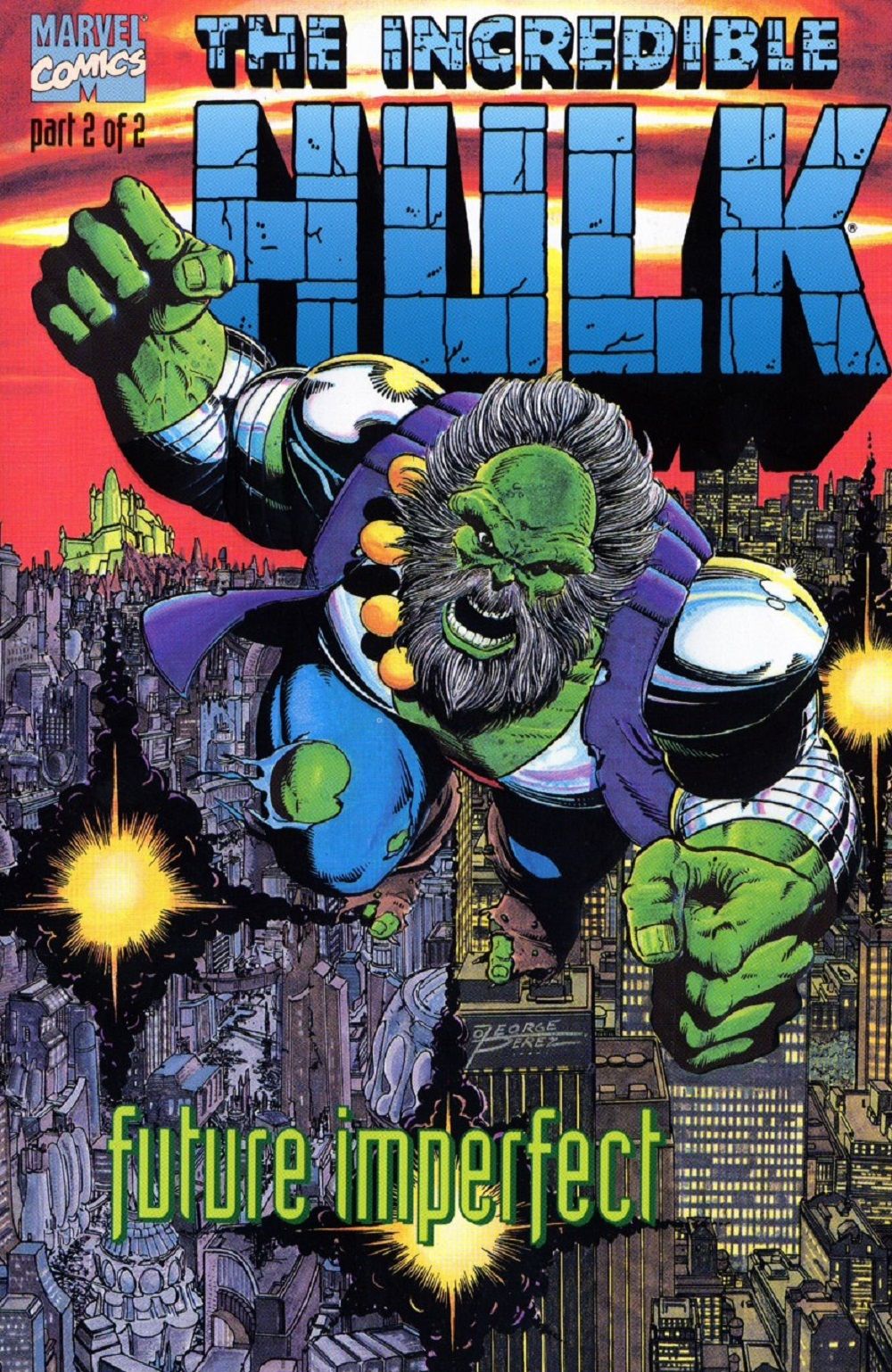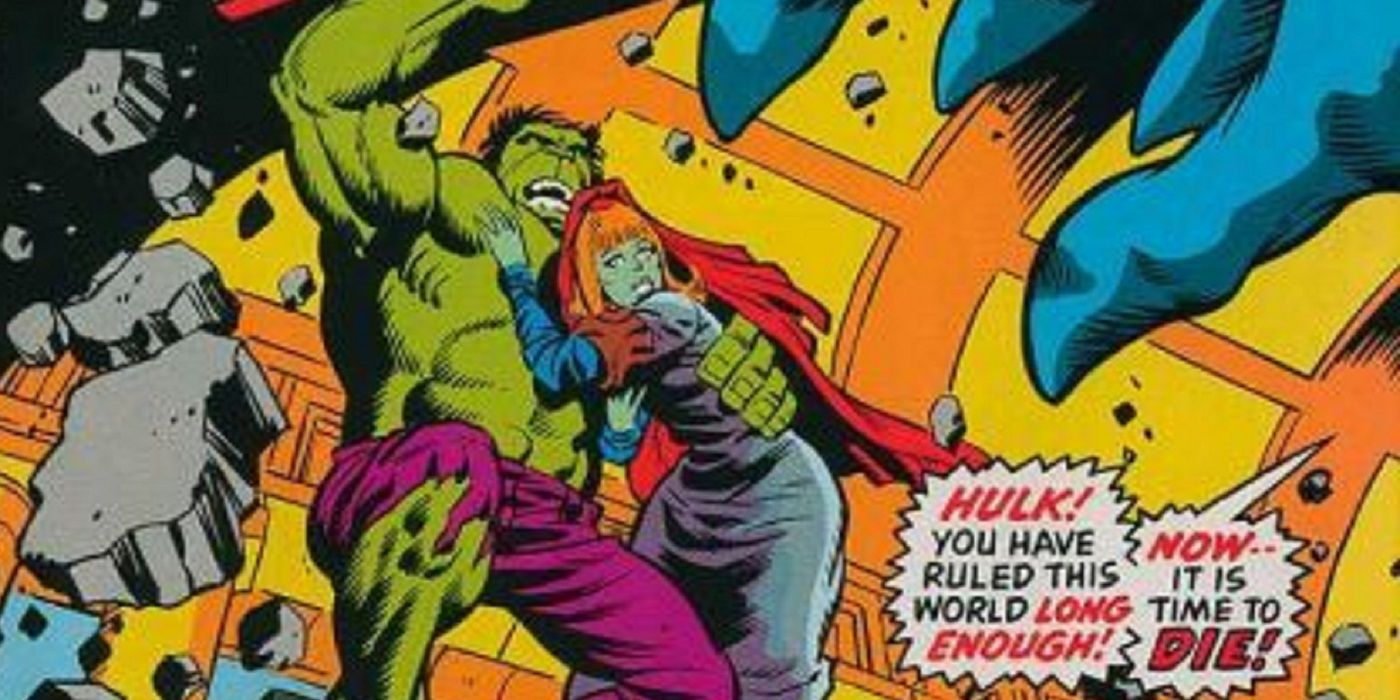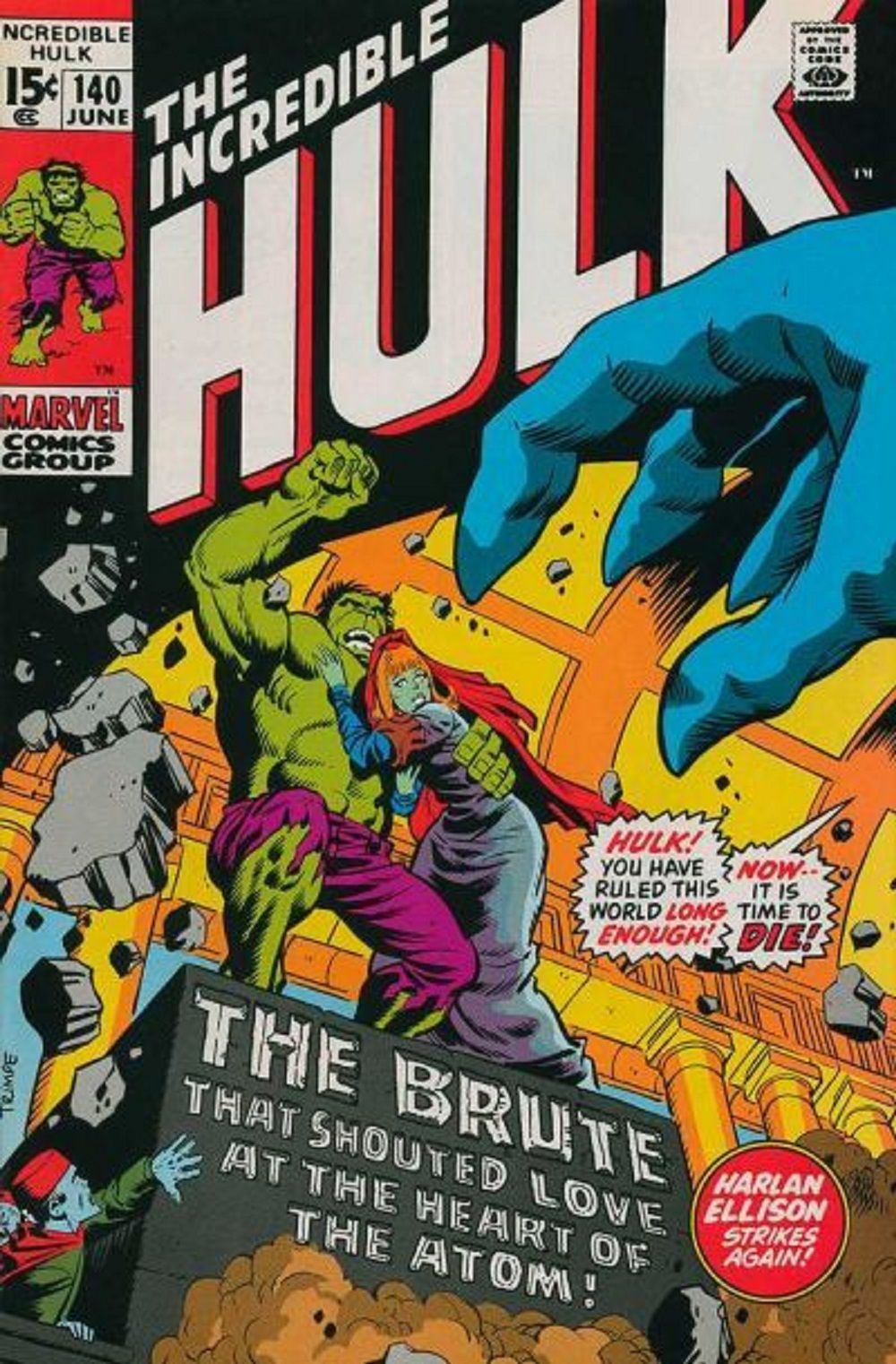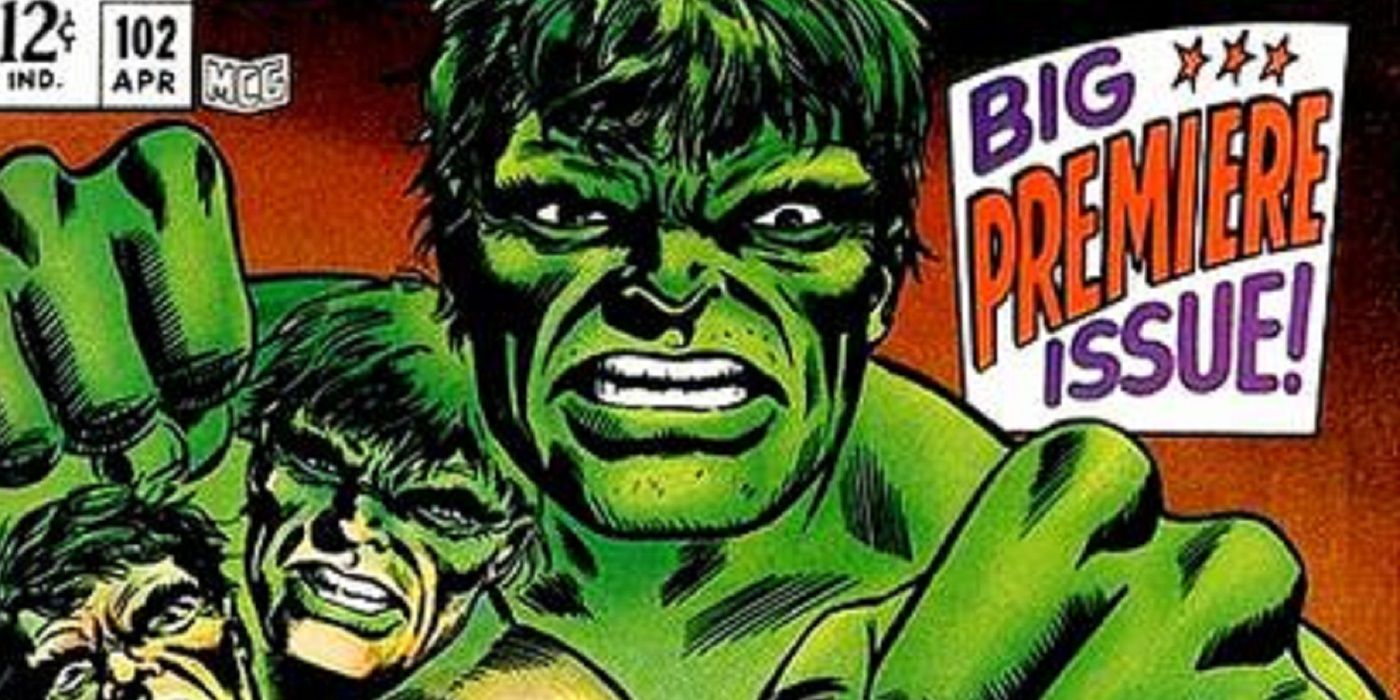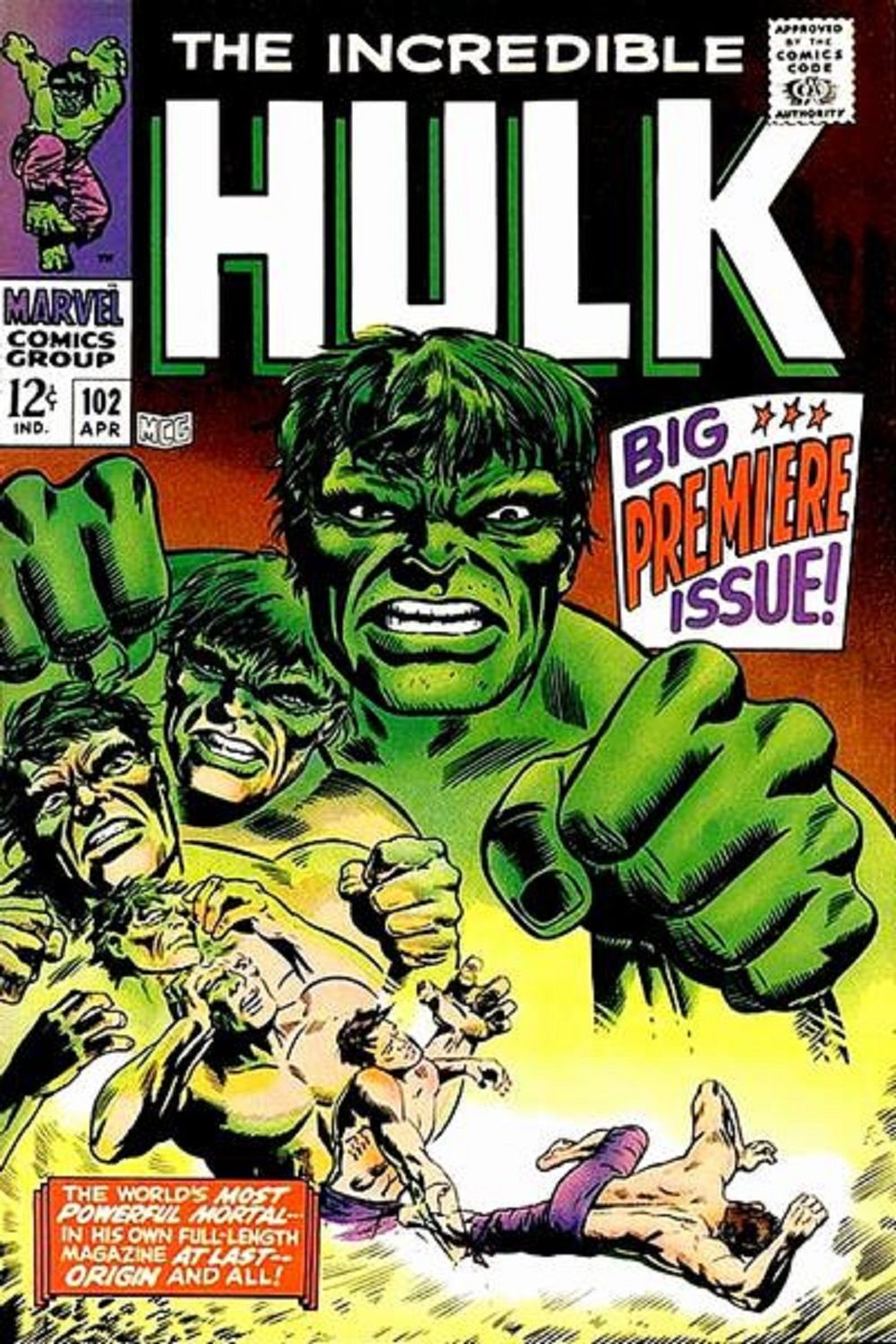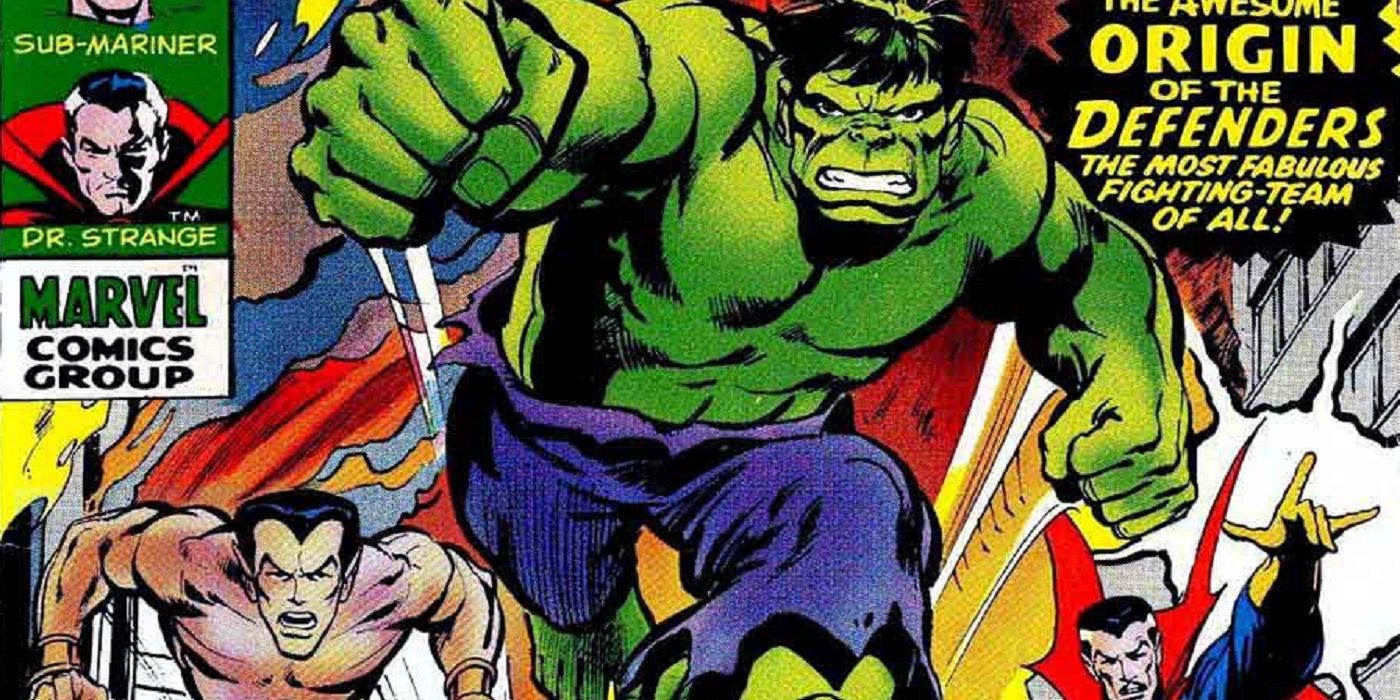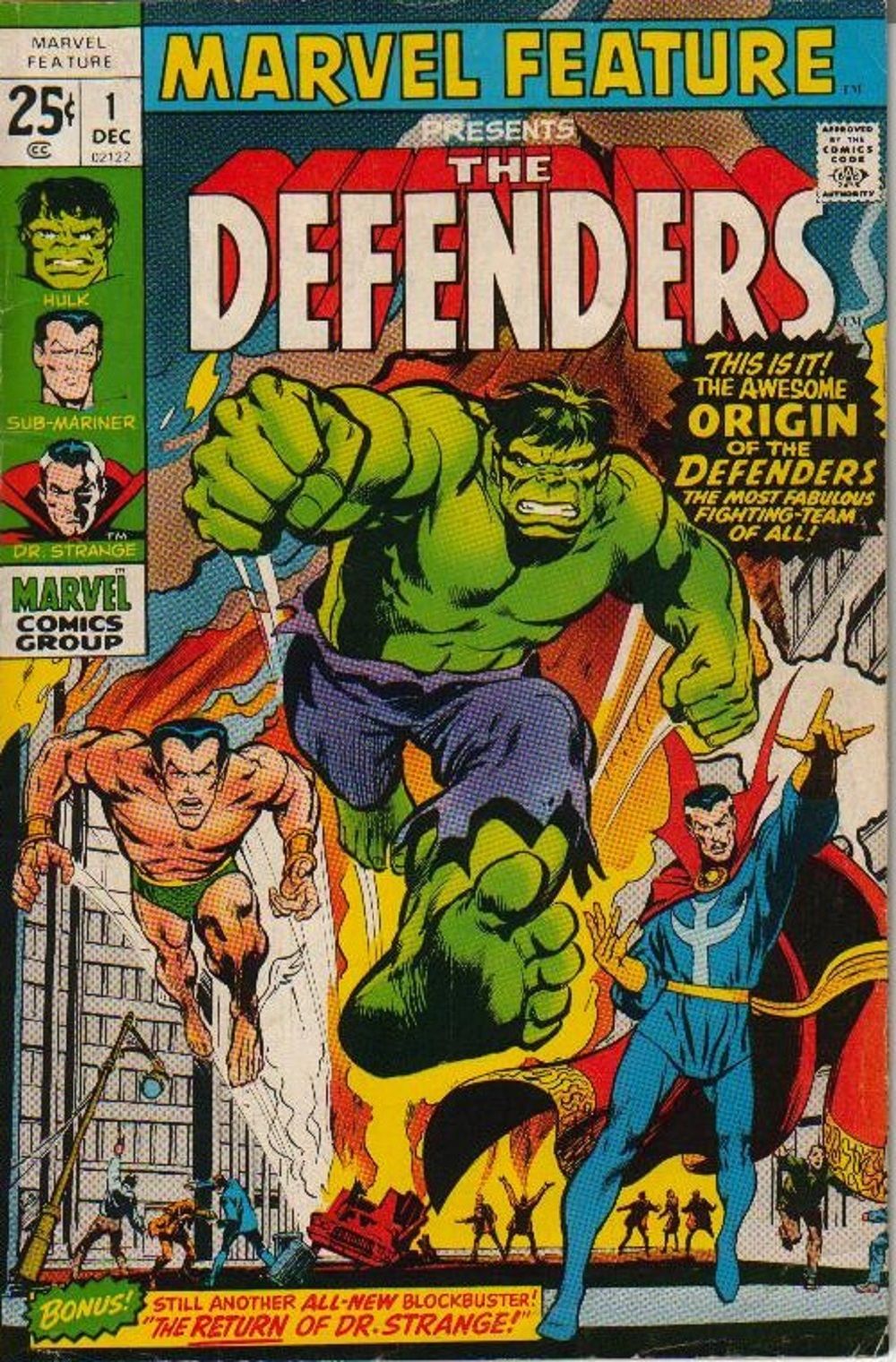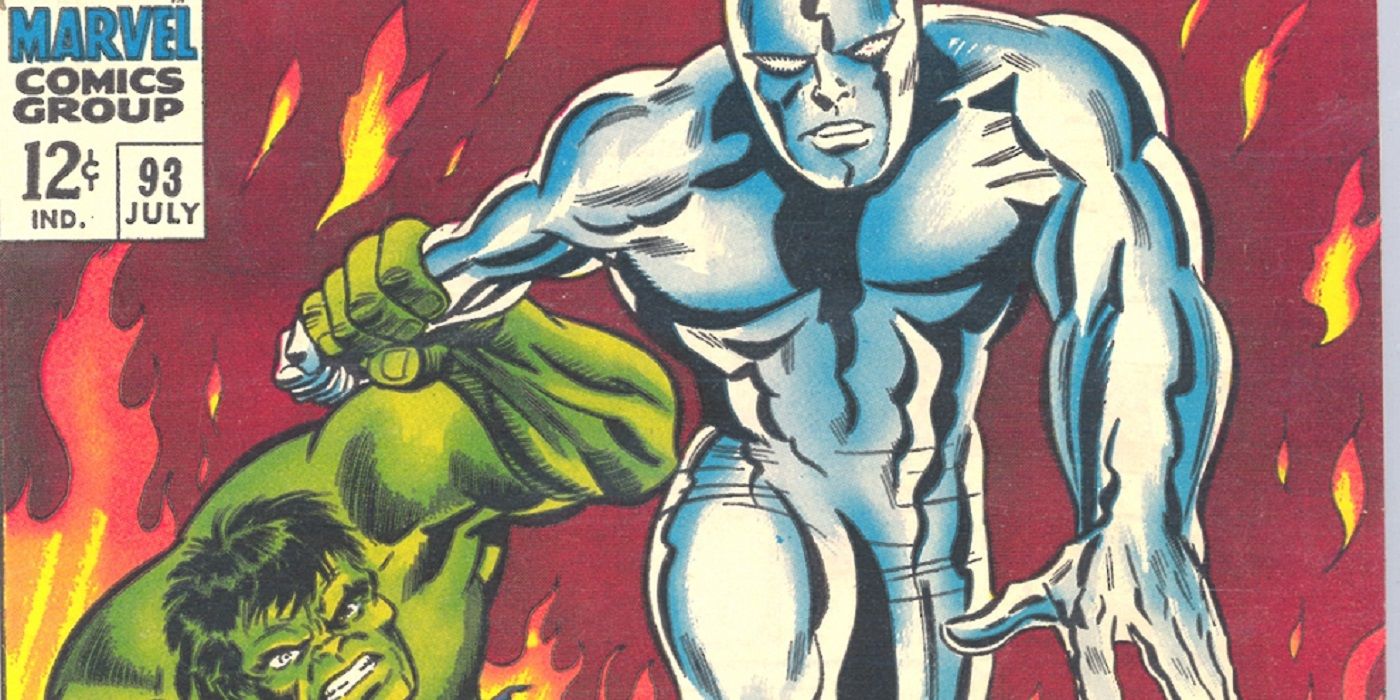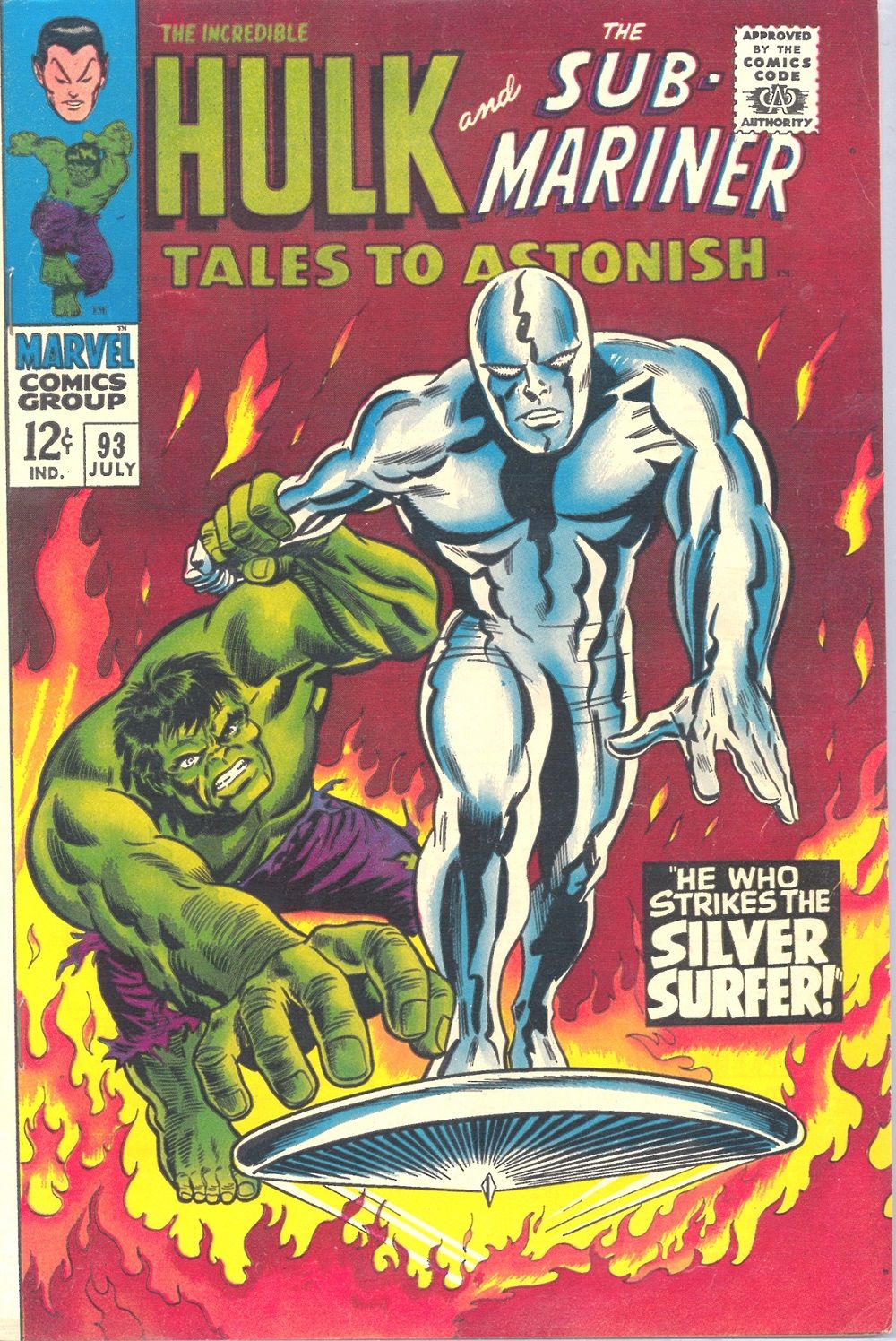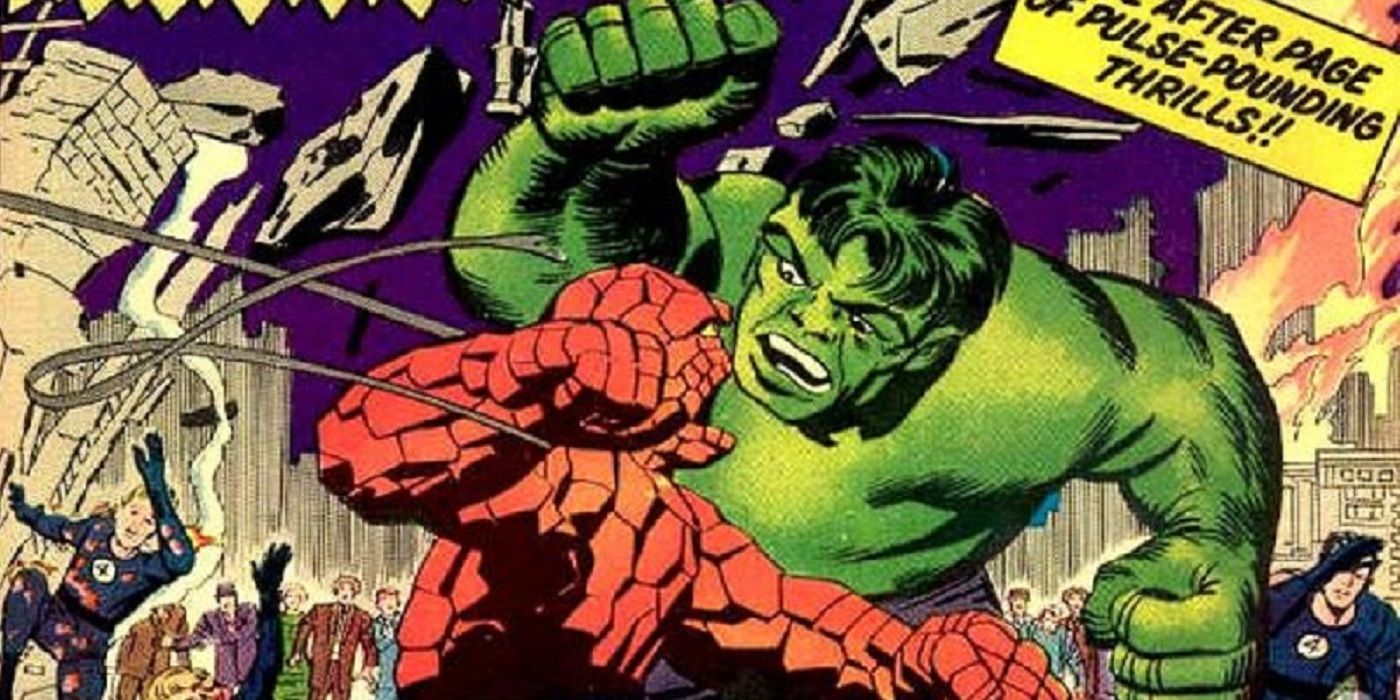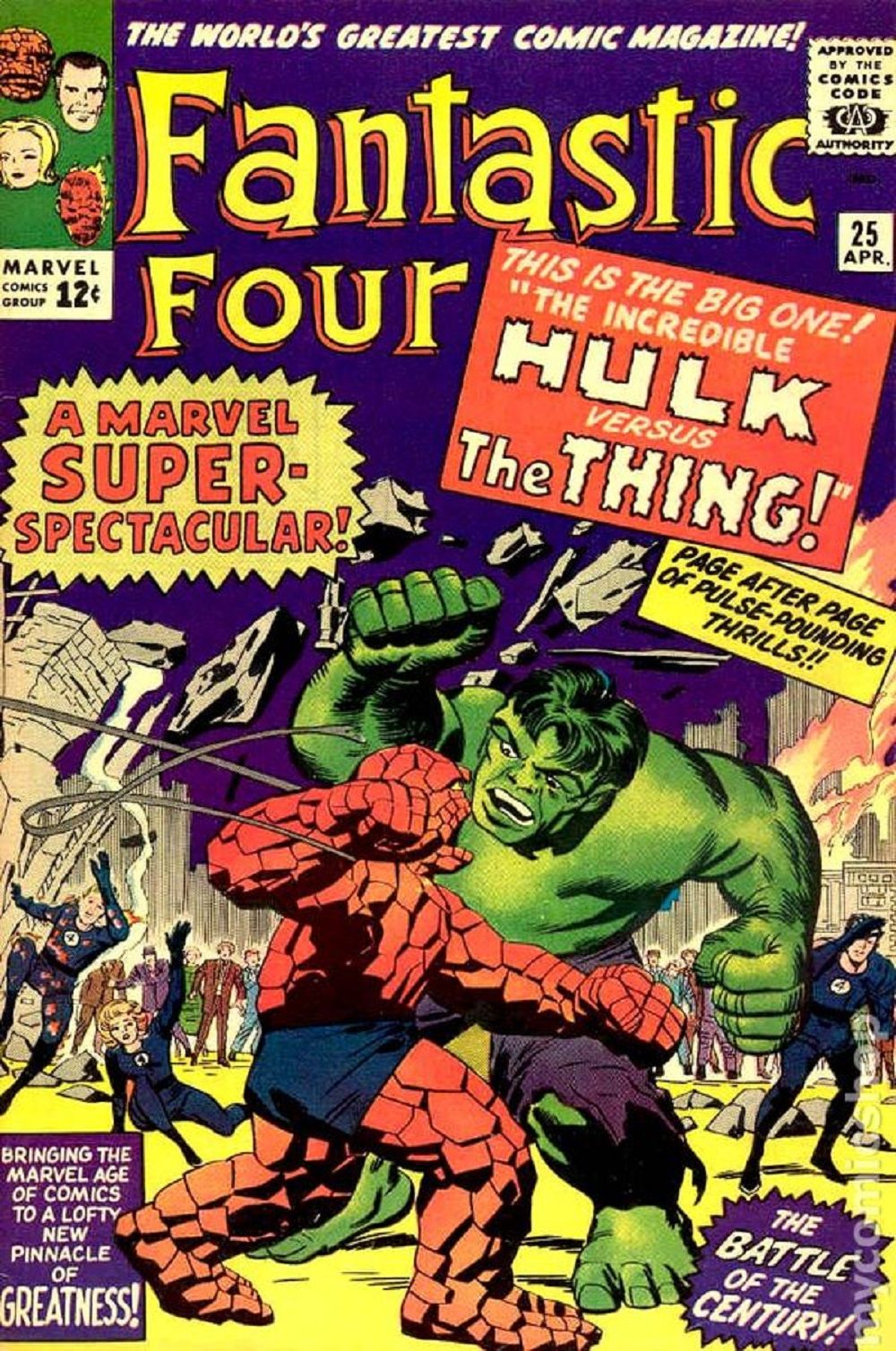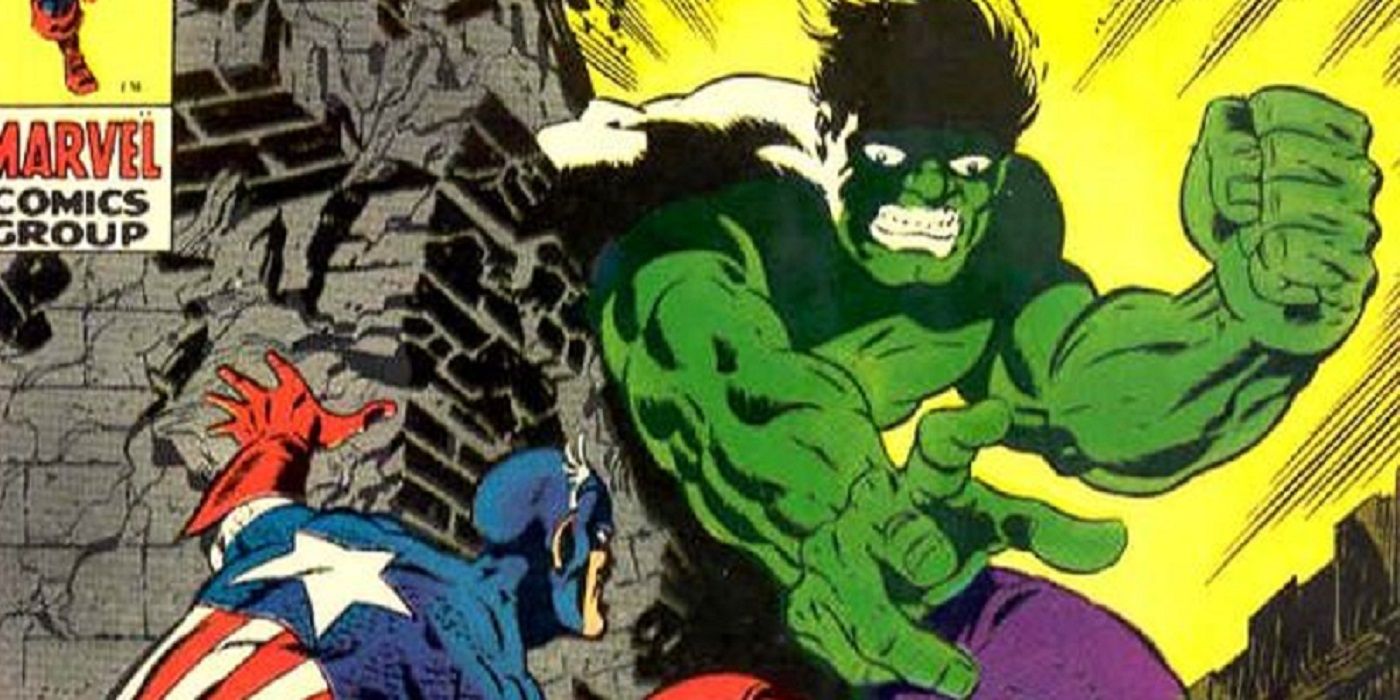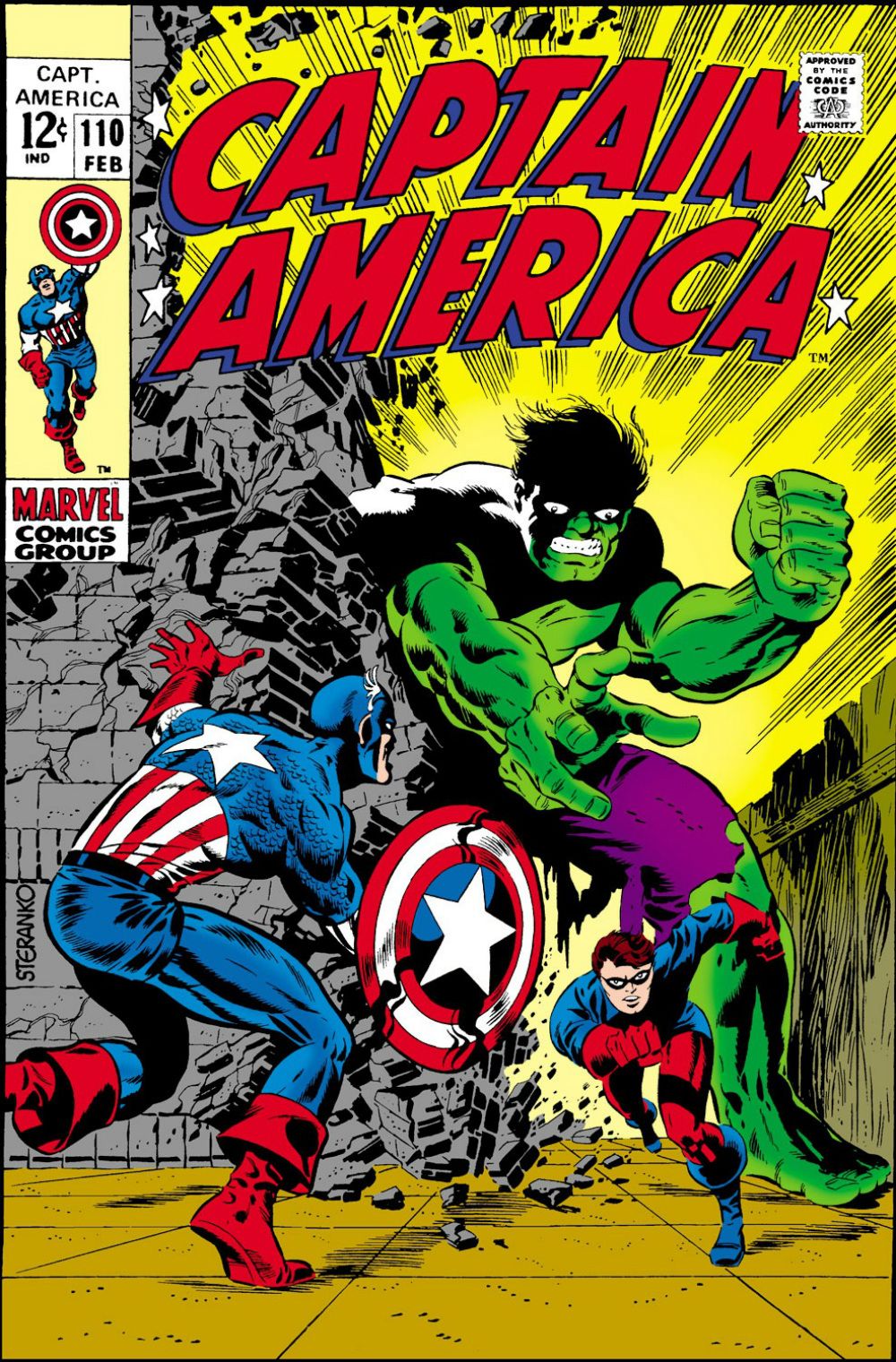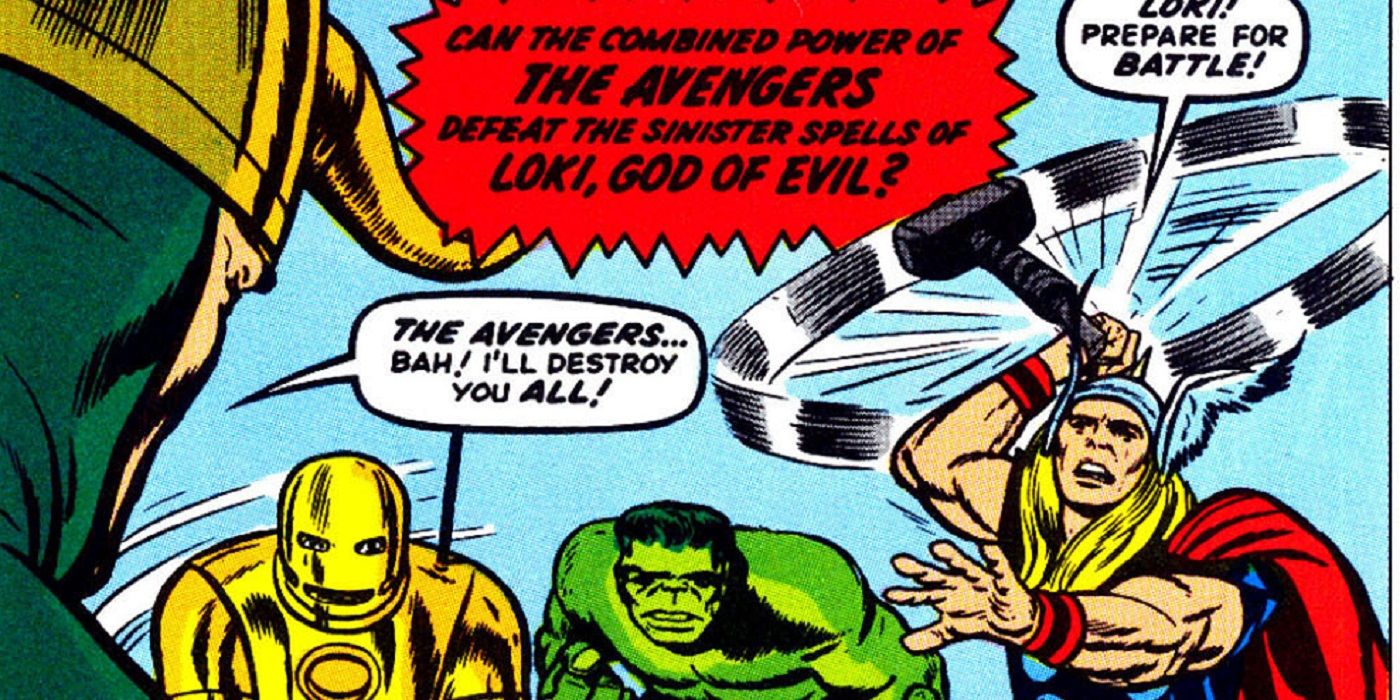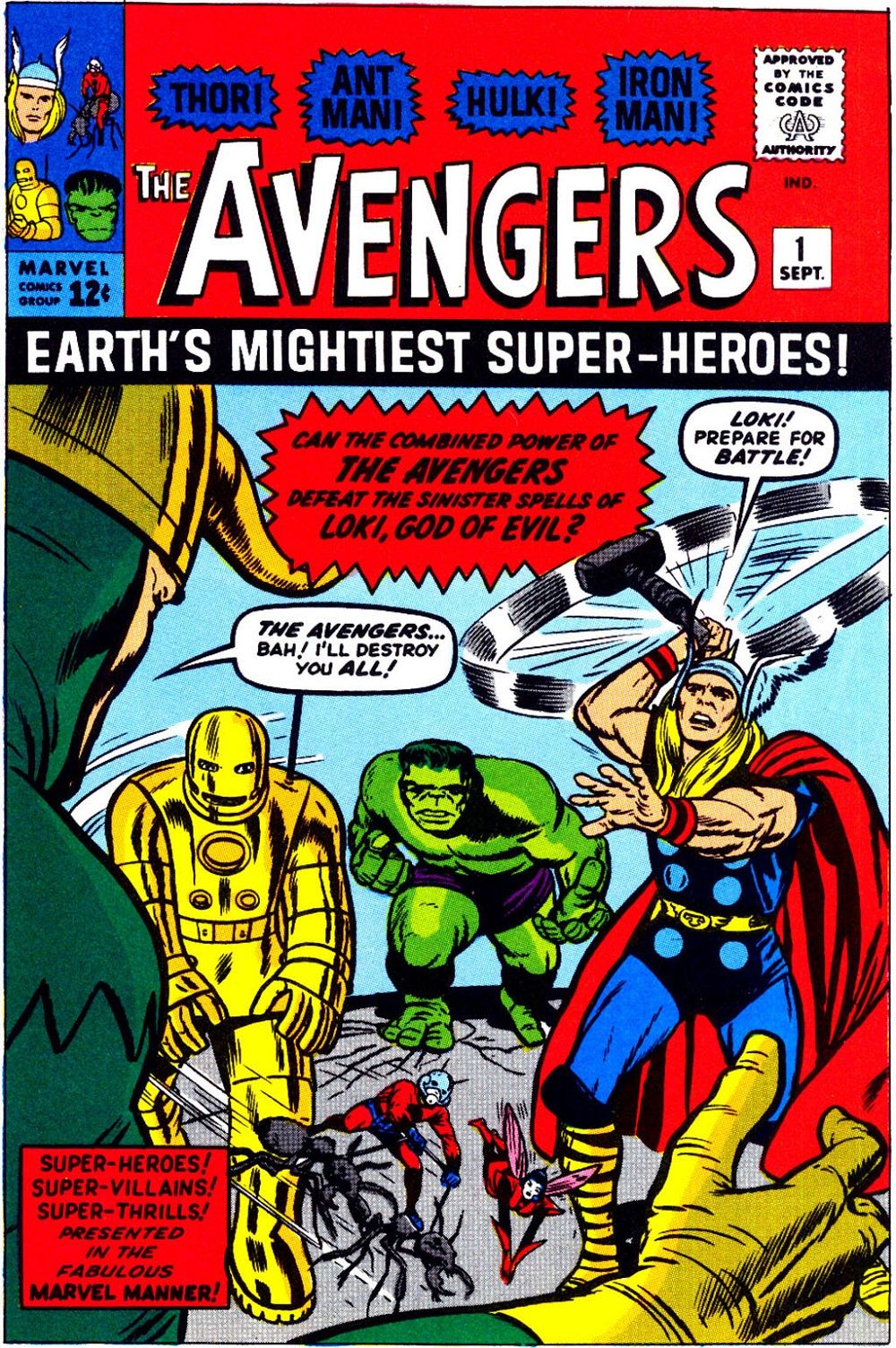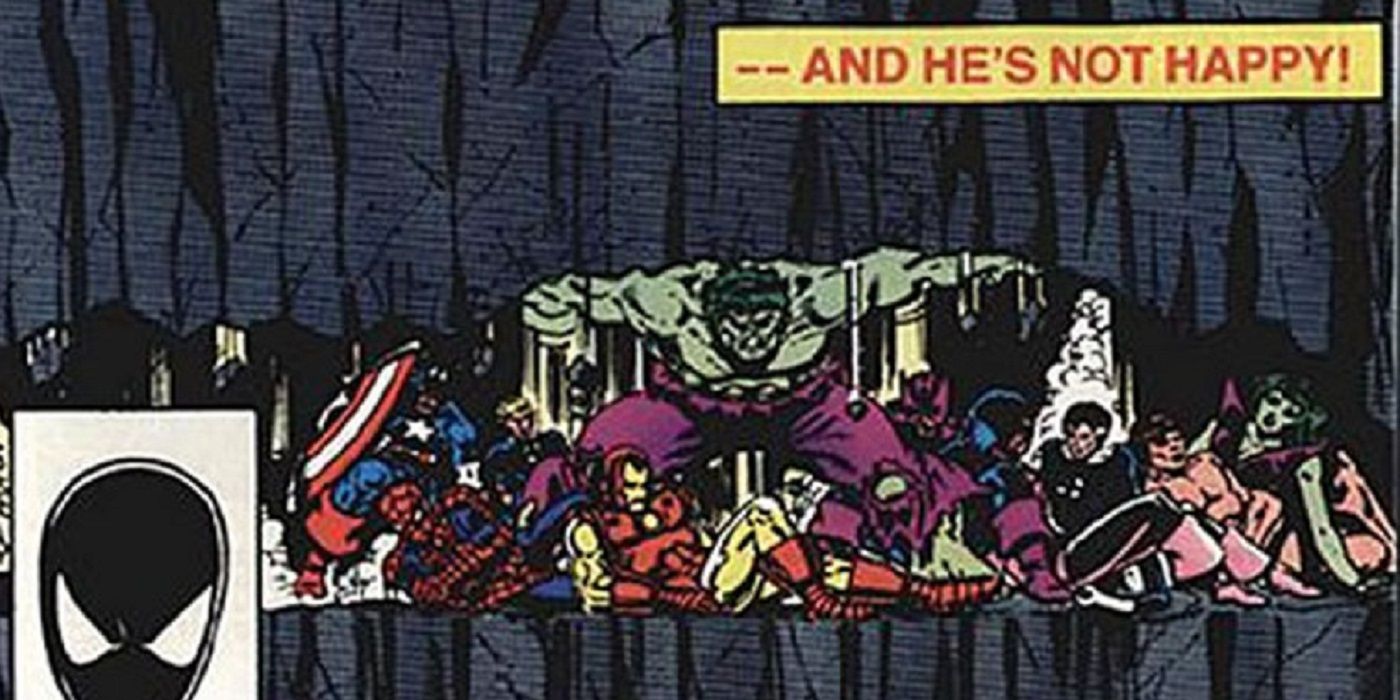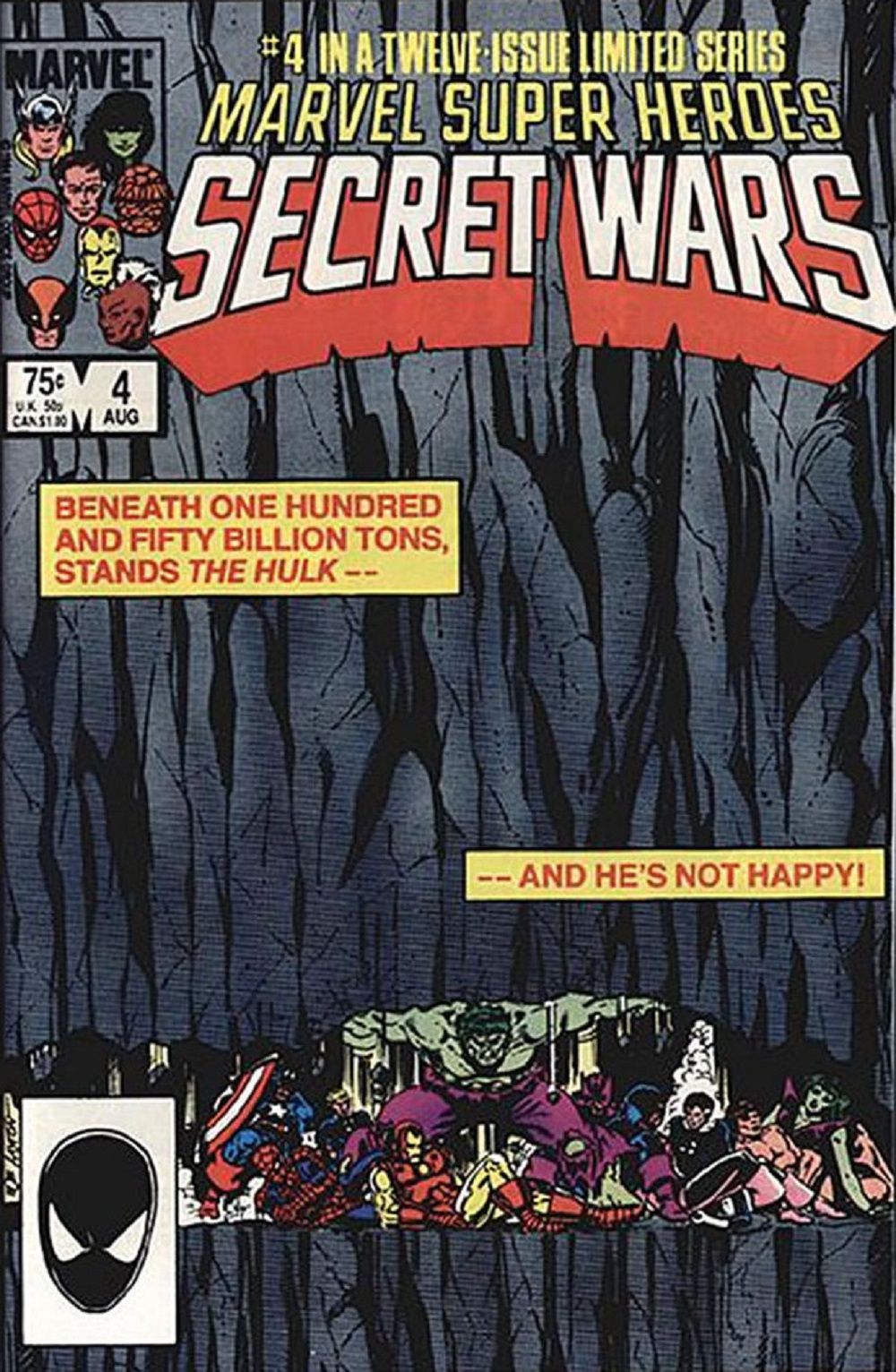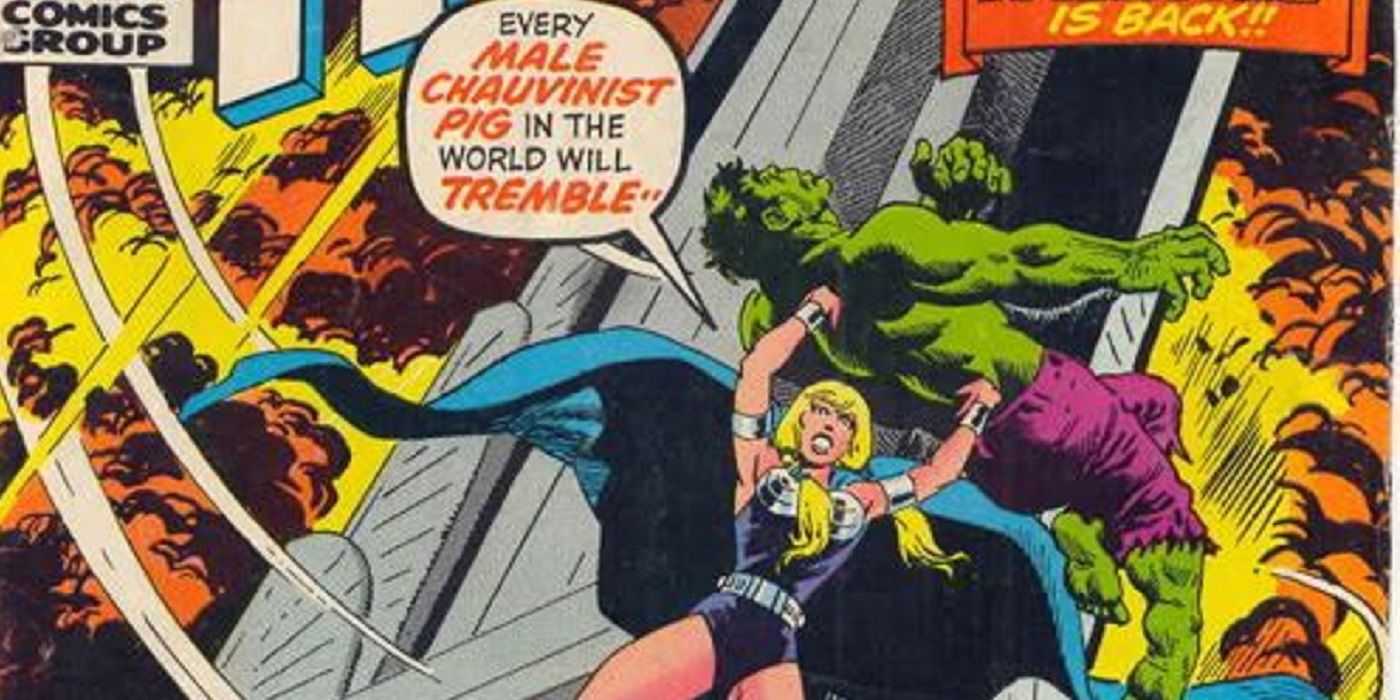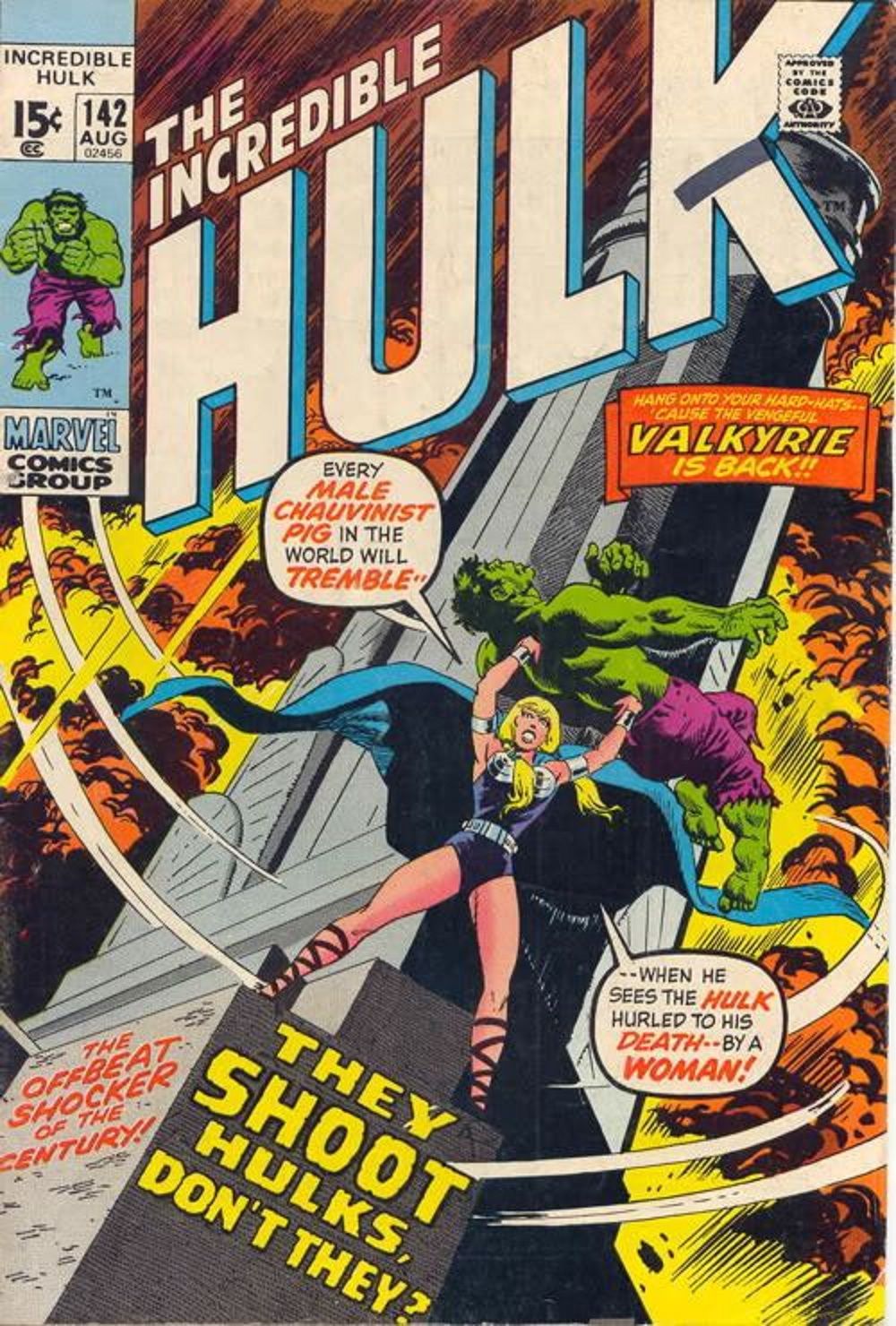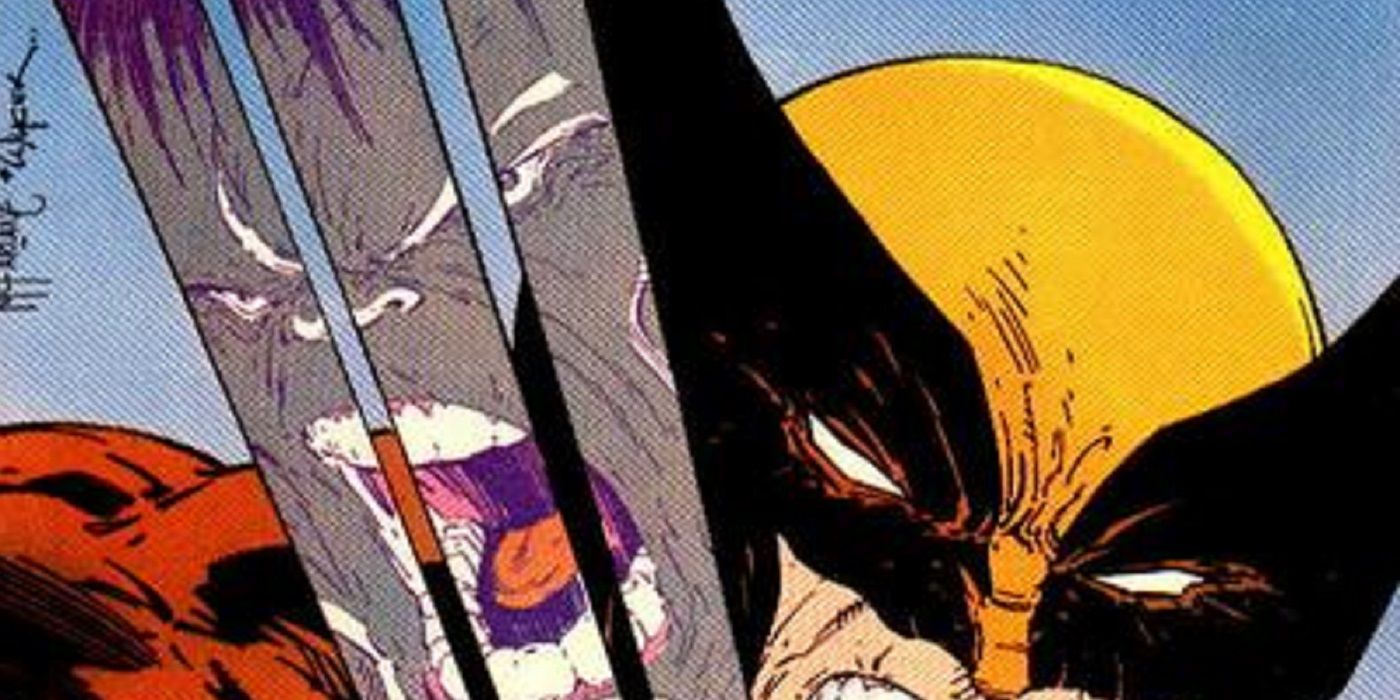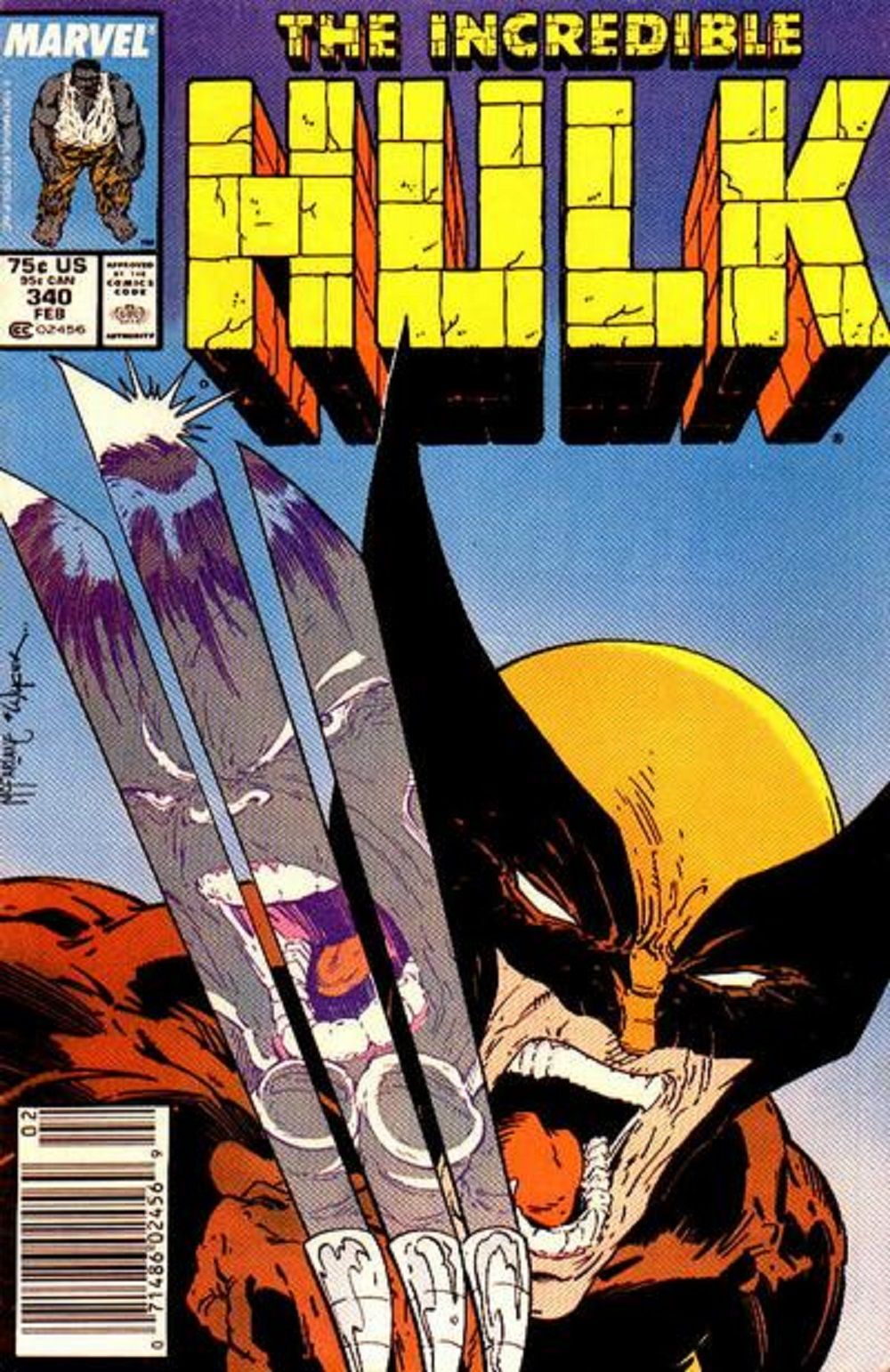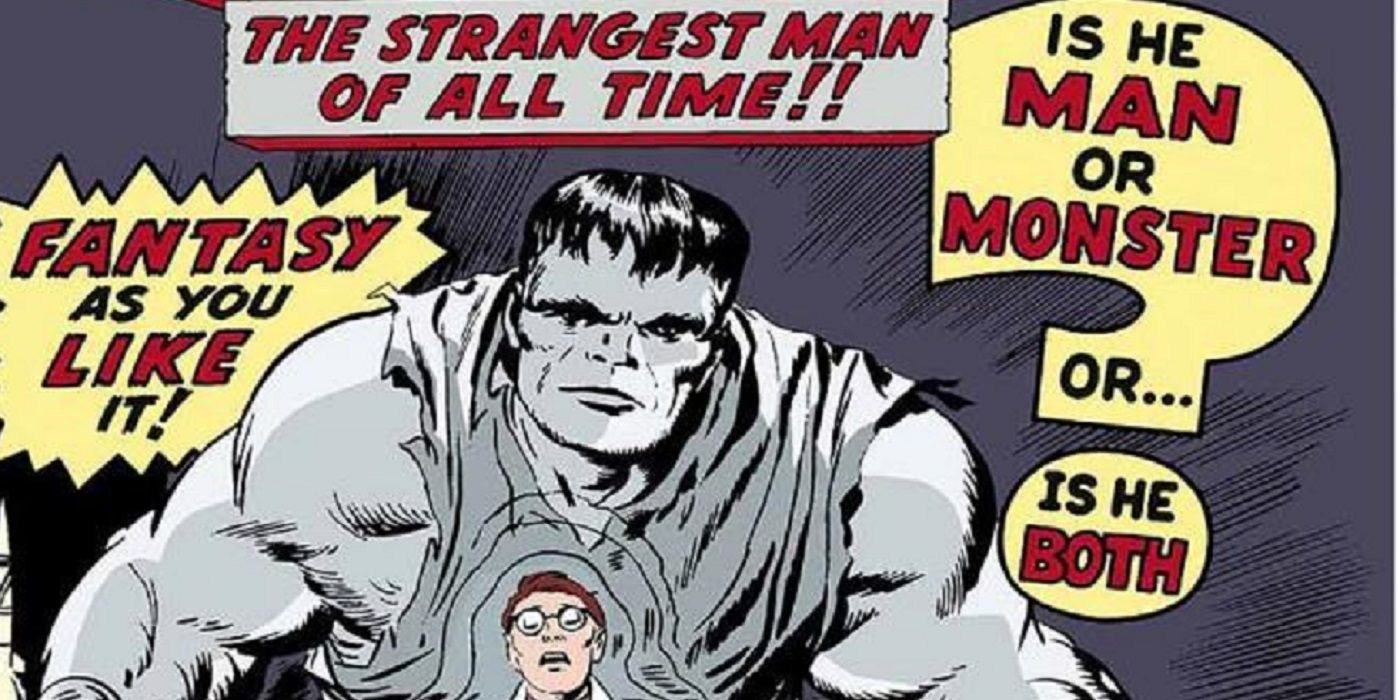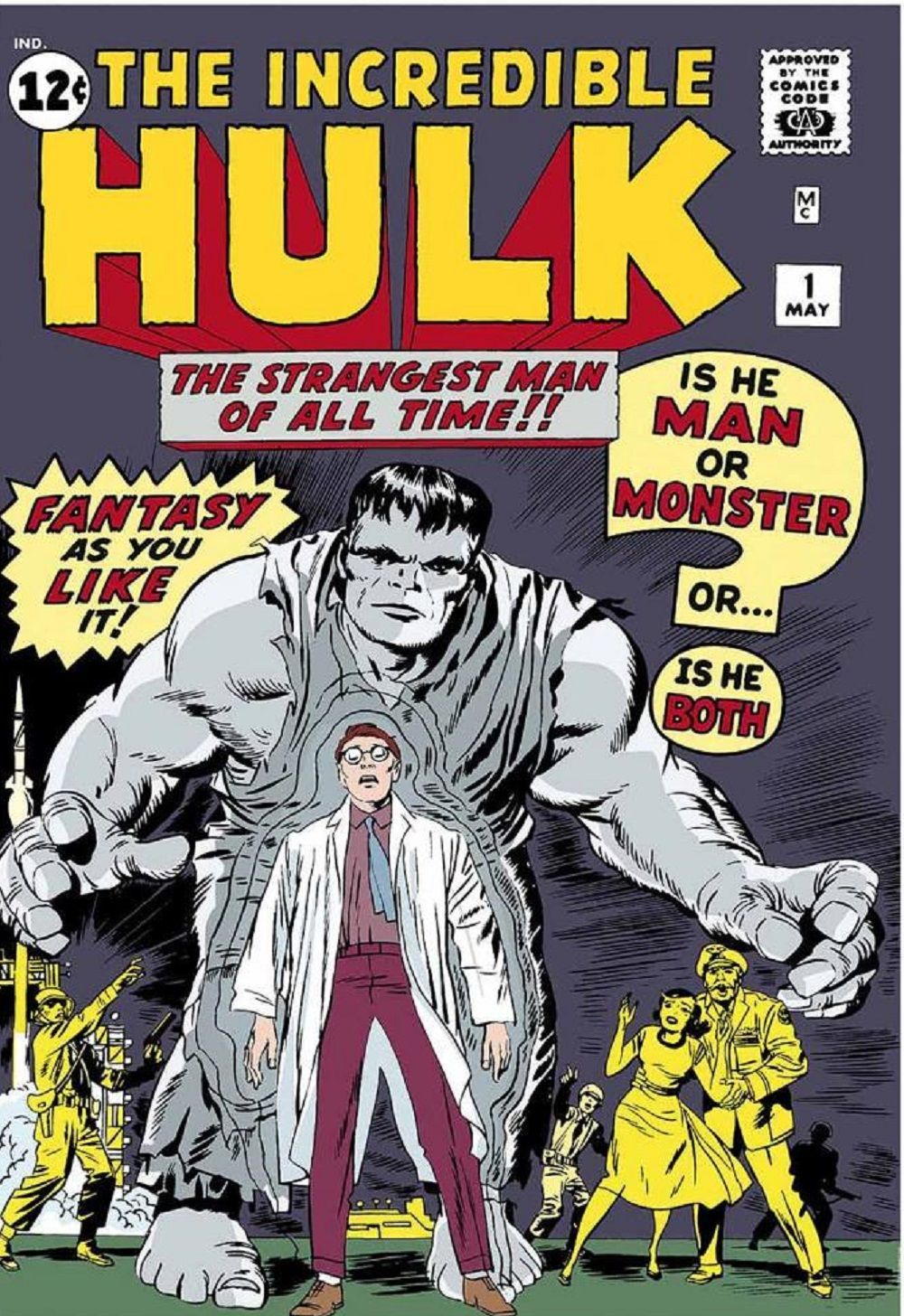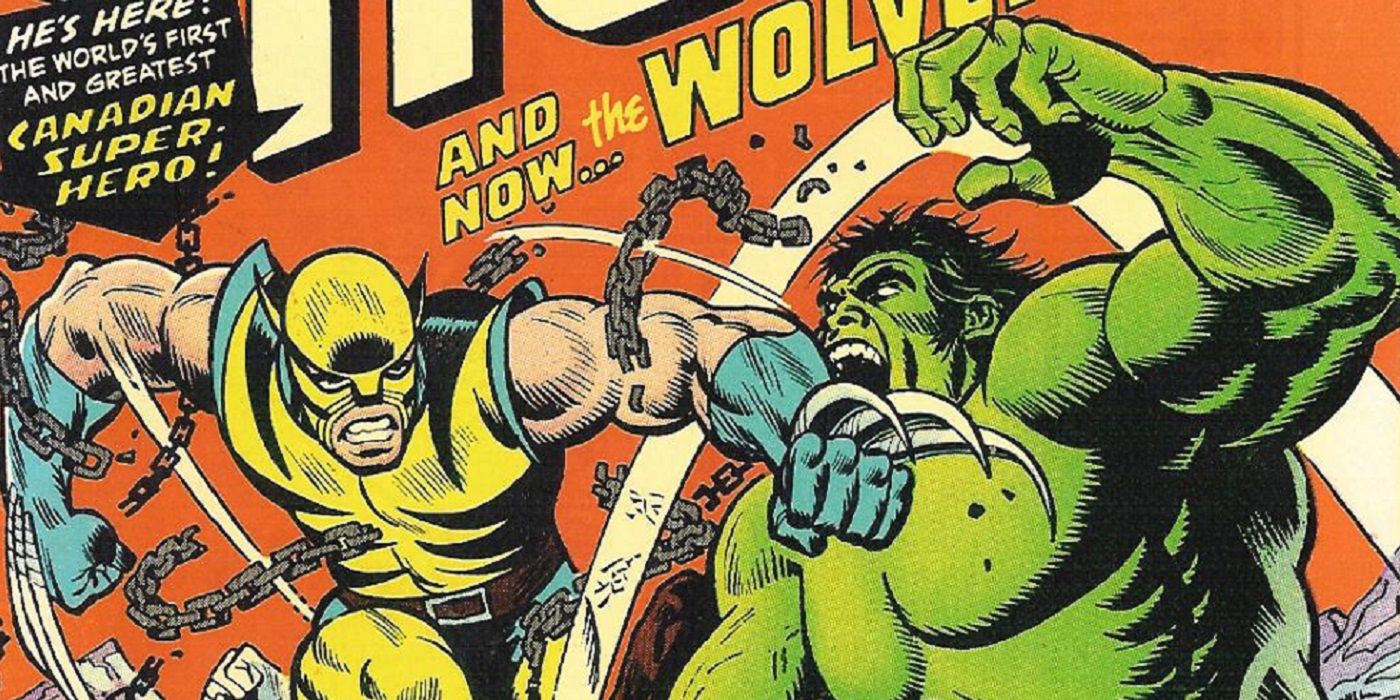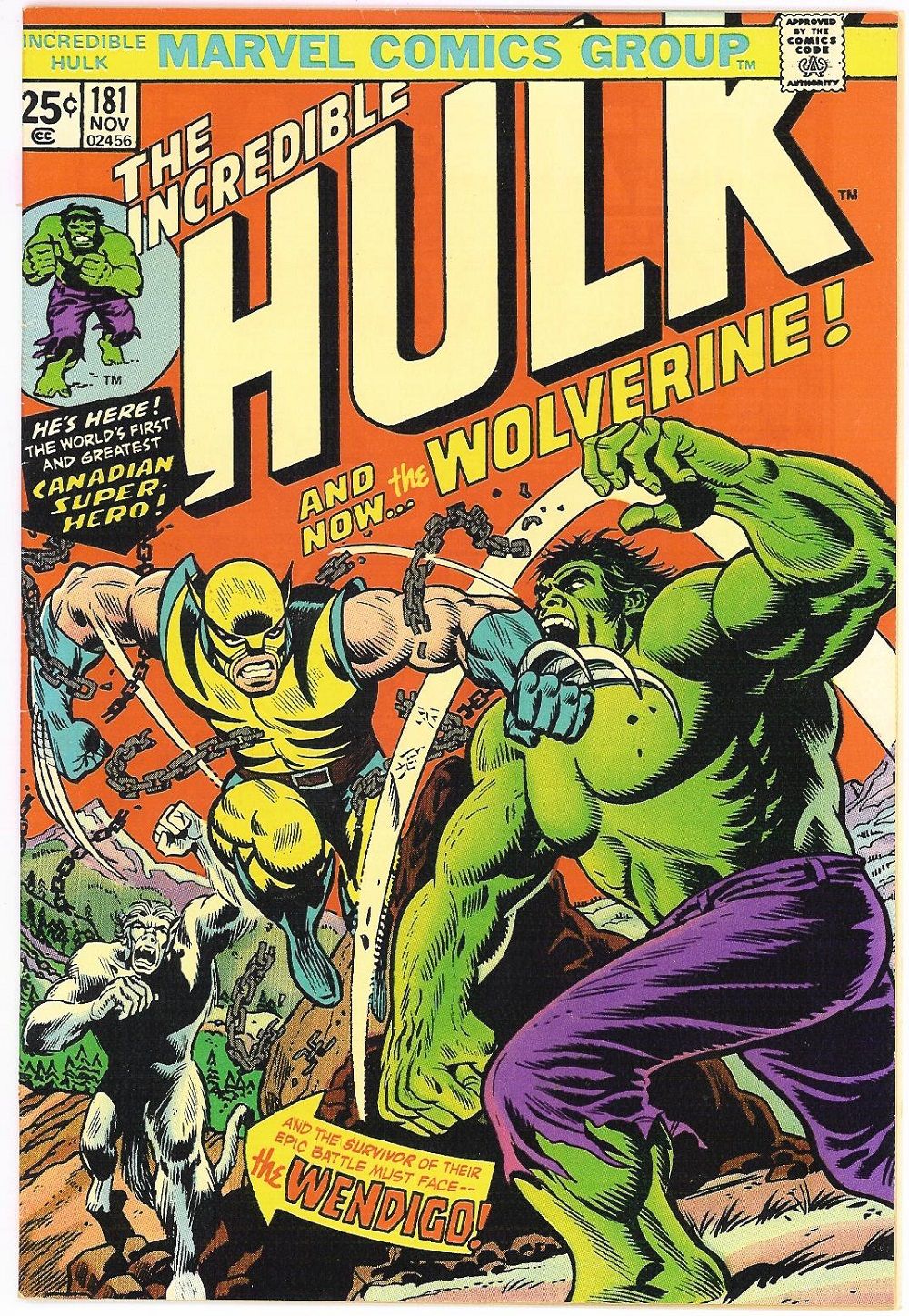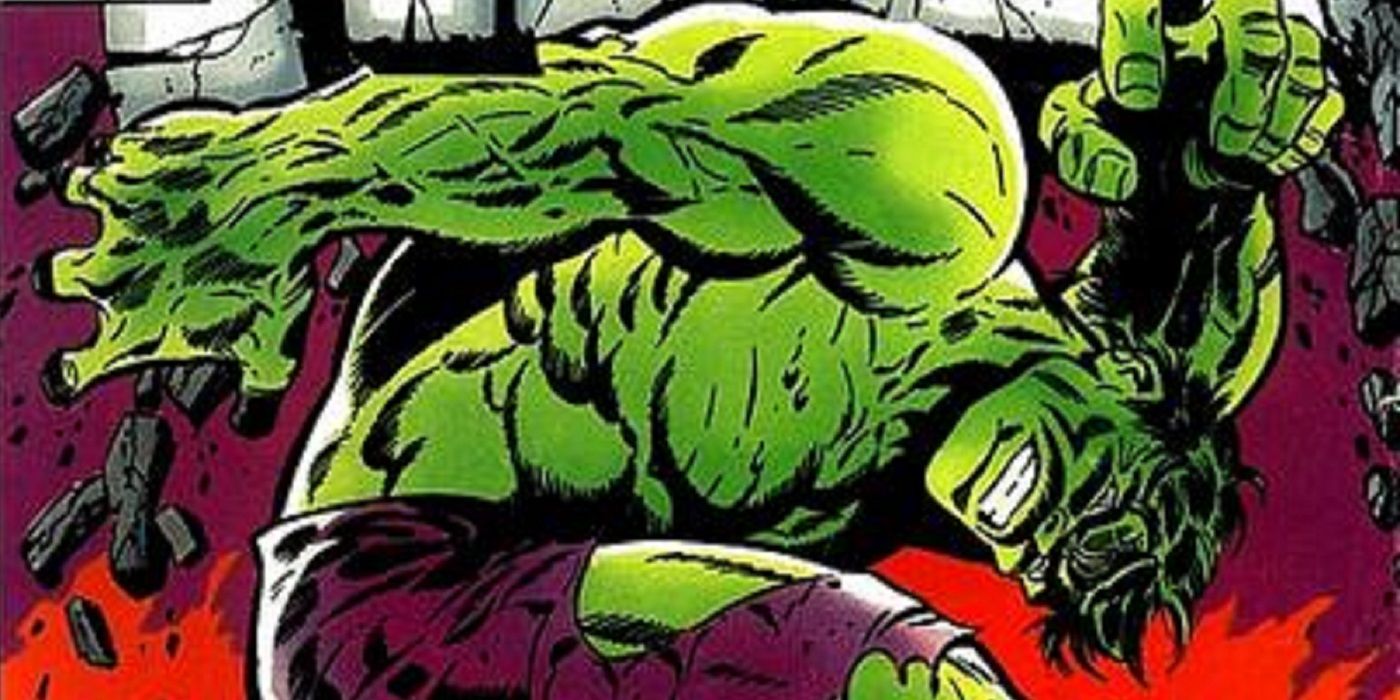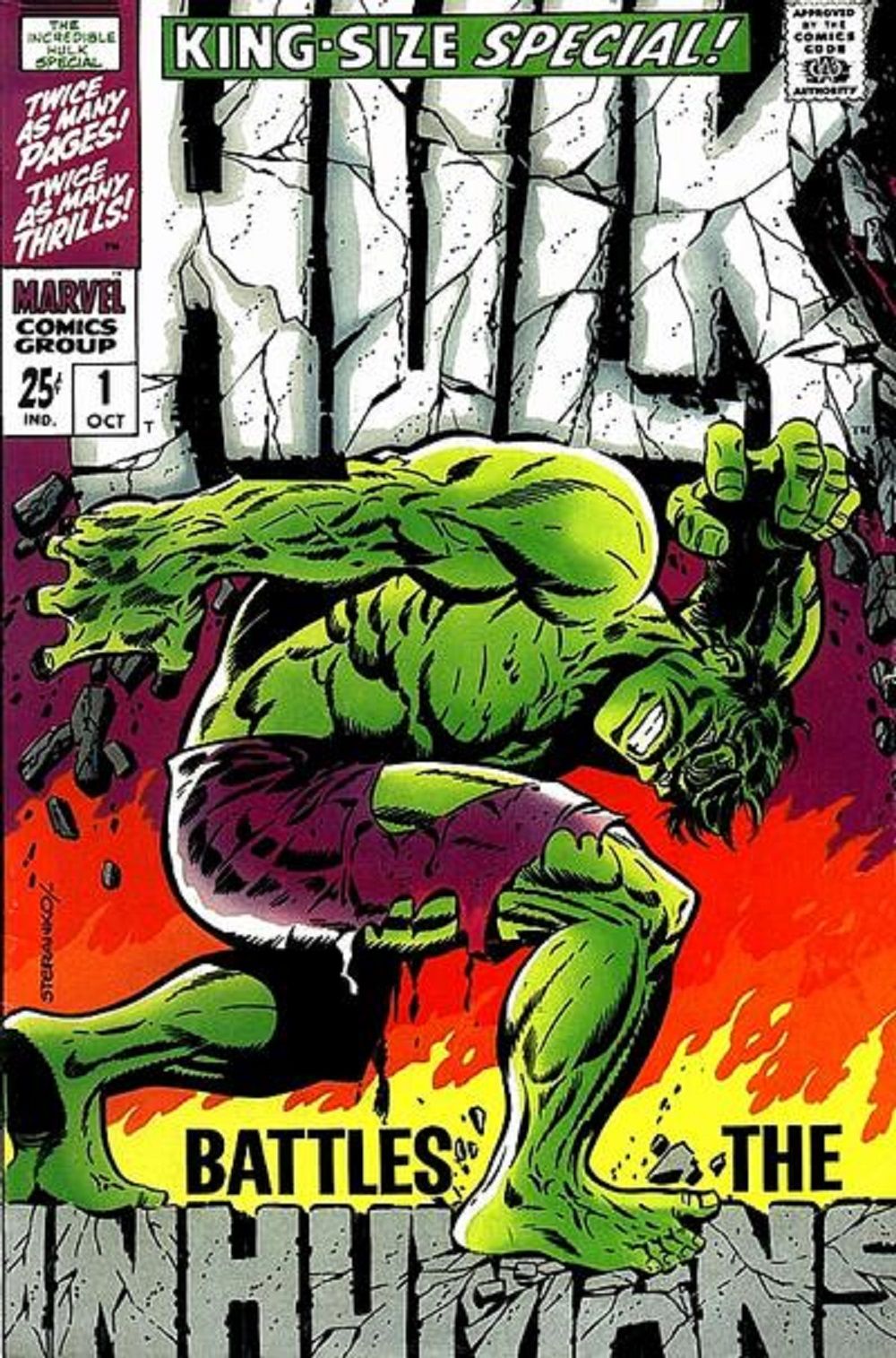Debuting in May 1962, Marvel's newest addition to their fledgling superhero universe was a world away from the family superheroics of "The Fantastic Four." Instead, he was big, mean and... gray. Stan Lee and Jack Kirby's modern twist on Jekyll and Hyde fused personality conflict with contemporary concerns about radiation and communism, creating one of Marvel's most enduring heroes.
RELATED: 15 Iconic Alex Ross Covers
While a lot has changed for the Hulk in the half-century since his debut, one thing has remained constant: as one of Marvel's strongest heroes (perhaps even the strongest), the Hulk's exploits have been captured on some memorable covers over the years. We at CBR have searched through hundreds of Hulk comics in order to select 15 of his most iconic covers. These are all instantly recognizable and often linked to moments of historical significance. More importantly, they highlight what a huge loss the death of Bruce Banner/Hulk was to the Marvel universe.
15 INCREDIBLE HULK #377
Todd McFarlane's successful run on "The Incredible Hulk" established a trend for the next few years, with many artists either getting their big break through this title or using it to increase their profile. This was the case with Dale Keown, who in his first ongoing series for Marvel quickly established himself as a hot creator and one of the definitive Hulk artists. Keown's run began with #367, at a time of some transition for the book's characters (a hallmark of Peter David's lengthy run). With issue #377, a new status quo was established for the title, with Keown producing a memorable cover to match.
After a long period where the Hulk had been in his smaller, gray form, this issue saw Doc Samson reconcile the warring parts of Hulk and Banner's psyches. The Hulk returned to his green form, but the savage beast of old was gone. Instead, he combined the green Hulk's strength with Banner's brains -- a combination that made this Hulk tremendously successful with readers. Keown's cover perfectly captures the Hulk's transformation, highlighting what is occurring but leaving the specifics purposefully vague. This issue was so popular that three printings were released, each with different colors on the cover.
14 FUTURE IMPERFECT #2
What do you get when you combine legendary creators Peter David and George Perez on a two-issue prestige format Hulk series? If your answer was "one of the greatest Hulk stories ever told" then pat yourself on the back. "Future Imperfect" was not only a darn good story, but also it made several key contributions to the Hulk mythos. Foremost among these was the introduction of the Maestro, the evil future version of the Hulk that has seized control of the world after a devastating nuclear conflict. Much of the series revolves around the contrast between Hulk and Maestro (and the Hulk's fear that this could be his eventual destination), and the two covers of the series continue this theme.
"Future Imperfect" #1 features a shot of the Hulk leaping towards the reader, with the cover's background showing 20th century Earth bleeding into the future landscape of the Maestro's time. "Future Imperfect" #2 continues this theme, with the Maestro spotlighted, and the positions of the background cityscapes reversed. In another nice touch, the blue sky of the first issue has been replaced with the radioactive glow of the apocalyptic future.
13 INCREDIBLE HULK #140
"The Incredible Hulk" #140 features a story from science-fiction author Harlan Ellison. More significantly for the Hulk, it features the first appearance of Jarella, the princess of a subatomic world who would go on to become a long-running love interest for him. The story concerned the Hulk being shrunk down to microscopic size by Psyklop. While the science may be questionable, the emotions at the heart of the story are not. The Hulk finally finds a place where he belongs, even achieving a new level of understanding with Banner.
The issue's cover, by Herb Trimpe, perfectly captures a pivotal scene within the issue. At the moment of the Hulk's greatest happiness, when he is about to be married to Jarella, Psyklop reappears and transports the Hulk back to Earth. It's a typically bittersweet ending for the Hulk, being separated from his ladylove and having his memories of her fade. The difference in scale between the Hulk and the giant hand... the reference to Hulk being a ruler... the strange woman who is referred to as Hulk's love - If a cover is designed to entice fans into purchasing the book, it's hard to see how any Hulk fan could have resisted.
12 INCREDIBLE HULK #102
The Hulk's own title, "The Incredible Hulk," only lasted six issues before it was cancelled, his adventures later being chronicled as part of the anthology series, "Tales to Astonish." During his time in the book, the Hulk had to share the spotlight with first Giant Man and then the Sub-Mariner. But then, in a move that would cause great headaches for Marvel historians in years to come, the title changed its name to "The Incredible Hulk" with #102, becoming a Hulk solo title. The first story, by the team of Gary Friedrich and Marie Severin, continued plot threads from "Tales to Astonish," but also recapped the Hulk's origins for new readers.
This focus on attracting new readers is evident from the issue's striking cover. It features the familiar transformation between Banner and the Hulk, but with an interesting focus. The Hulk is undoubtedly the focus of the image, being portrayed as strong as possible. Yet the familiar transformation does not see Banner turn into the Hulk. The flow of the images suggests the transformation of the Hulk into Banner, leaving him spent and exhausted on the ground.
11 MARVEL FEATURE #1
Famously, the Hulk isn't a great team player. His membership of the Avengers lasted only two issues before he quit, and by the next issue, he was teaming up with the Sub-Mariner to fight them. The Hulk's association with the Defenders was more successful. A less formal organisation than the Avengers, and made up of members who were just as socially maladjusted as he was, the Hulk was a perfect fit for this "non-team."
The Hulk had teamed up with the Sub-Mariner and Dr Strange before, as well as with the Silver Surfer. This was different and was a deliberate attempt to market these characters as a group. As the cover text humbly declares, they are "the most fabulous fighting team of all." The story was by Roy Thomas, with Ross Andru handling the art. However, the cover to this issue was by Neal Adams, who at the time was enjoying great exposure through his work on "The Kree-Skrull war" arc in "The Avengers." It's a dynamic, attention grabbing show, with ol' greenskin front and center.
10 TALES TO ASTONISH #93
"Tales to Astonish" #93 continues the depiction of the first meeting between two characters who could not be more different: the Silver Surfer and the Incredible Hulk. While the Surfer was, at heart, a peace-loving, soliloquy spouting hero, the Hulk was very much a smash first and ask questions later kind of guy. It's therefore no great surprise that their first encounter quickly descended into a typical Marvel hero-on-hero battle.
The issue's writer was Stan Lee, with art provided by Marie Severin. The issue's striking cover is a classic example of less is more. There's no speech bubbles and little Marvel hyperbole beyond the story's title. In truth, they're not needed. Severin's illustration perfectly captures the serene, almost detached, determination of the Surfer, while the Hulk's unwillingness to let his opponent leave is also plain to see. A pivotal plot point in the story is that of the Hulk attempting to gain control of the Surfer's board. While the attempt may have been doomed to failure, the cover perfectly captures the Hulk's stubborn determination.
9 FANTASTIC FOUR #25
There are few superhero match-ups in comics more beloved than the battles between the Hulk and the Thing. They have occurred in "The Fantastic Four," "The Incredible Hulk," epic crossovers and were even the focus of their own miniseries, "Hulk/Thing: Hard Knocks." The Thing and the Hulk had previously fought in "Fantastic Four" #12, but in this issue, their fight is very much the main event. What else would you expect from a story entitled "The Hulk vs The Thing"?
Jack Kirby was seemingly incapable of drawing a bad cover, with even his less-inspired ones tending to have some aspect that makes them stand out from the crowd. In this, there are countless nice touches. The Thing is deliberately portrayed as the pluck underdog, being substantially smaller than the Hulk, and the crowd of Marvel universe civilians are transfixed by what's before them. What's also effective is the way in which Kirby sidelines the FF but keeps them in a prominent place on the cover, making it clear that this is one battle that is down to The Thing alone.
8 CAPTAIN AMERICA #110
This eye-catching cover saw Jim Steranko display his take on the Hulk to Marvelites, and "Jaunty" Jim didn't disappoint. This Stan Lee story saw Captain America face off against the Hulk, in a battle that led to Rick Jones assuming the identity of Bucky, Cap's long-dead sidekick (or so readers at the time thought). What's interesting about this portrayal of the Hulk is that, due to his status as a guest star in another hero's title, we're seeing him as he appears to others. Accordingly, the struggle between man and brute is sidelined and replaced with an insight into what a terrifying engine of destruction the Hulk can be.
Steranko's cover really sells this to the reader, with the Hulk rendered in terrifying proportions. Upon closer inspection, the height of the characters don't seem to relate to each other, with Rick appearing to be about knee-height to the Hulk. For sheer impact, though, the cover really works, convincing the reader of the threat posed by the Hulk.
7 AVENGERS #1
It says a lot about the quality of the Hulk's covers that a cover as iconic as "Avengers" 1 is relatively low down on the list. Part of the reason is that despite its familiarity and the fact that several titles have paid homage to it (including "Thunderstrike," "New Avengers" and "Superhero Squad"), it's not a particularly memorable depiction of the Hulk. This may be because the Hulk was typically portrayed as almost unmatched in strength. When sandwiched between Thor and Iron Man, both of whom were given more prominent placements on the cover, he looks somewhat diminished.
But in fairness, this is just splitting hairs. It's undoubtedly an iconic cover of historical significance, and also works well as the cover for a first issue. It's easy for modern readers -- grown jaded by Marvel's glut of Avengers books -- to take team-ups for granted. But for readers of the time, to see their favorite solo heroes gathered together must have been a tremendous thrill.
6 SECRET WARS #4
"Secret Wars" was Marvel's first big event book; a 12-part crossover that from humble origins as a toy tie-in grew into a universe changing event. With such a sprawling cast of heroes and villains, it would perhaps be understandable if certain characters didn't get their time to shine. This wasn't the case for the Hulk. He was instrumental to one of the event's most pivotal scenes, one that was immortalized by Bob Layton on the cover to #4. How strong is the Hulk? Strong enough to hold up 150 billion tons, if this issue's cover is to be believed.
The sums involved are so huge as to be almost laughable, if it weren't for the fact that Layton's cover absolutely sells this moment to the reader. We see the other heroes in a state of distress: some unconscious, others wounded and all weak from lack of air. Even Captain America with his shield raised can, at best, only deflect chunks of falling debris. At this time the weight of the world -- literally -- is on the Hulk's shoulders, and Layton convinces the reader that it's a burden he can bear.
5 INCREDIBLE HULK #142
Despite his lengthy run as artist on "The Incredible Hulk," Herb Trimpe's art is something of an acquired taste for some fans. What can't be denied, however, is that he was responsible for some very striking covers during his time on the book. Issue #142, a story entitled "They shoot Hulks, don't they?" marked the Hulk's first encounter with Valkyrie, who would go on to become his friend and companion in "The Defenders." This incarnation of the Valkyrie saw her linked with Samantha Parrington, a supporter of the Women's lib movement. When she gains the powers of Valkyrie, it's fair to say that Samantha is rather unimpressed by the Hulk's old-fashioned views.
The positioning of the cover really sells the scene. Valkyrie is not only able to lift the Hulk above her head, but is also willing to throw him t his death. Furthermore, he's passive, not even putting up a fight. This was not the Hulk that readers were used to seeing and, when combined with the cover captions, will have enticed many fans to part with their cash.
4 INCREDIBLE HULK #340
With Wolverine originally debuting in the pages of "The Incredible Hulk," encounters between the feral furball and old jade jaws have always been enjoyable grudge matches. This encounter, from the creative team of Peter David and Todd McFarlane, was a no-holds-barred encounter where both combatants were out for blood. Both the participants had changed since their first encounter. Wolverine was attempting to be more responsible and avoid needless fighting; the Hulk was now in his gray-skinned "Mister Fixit" incarnation -- although he was not the strongest Hulk he was undoubtedly one of the most cunning.
This well-known cover shows a fighting-mad Wolverine with claws extended, with the angry features of the Hulk reflected there. Fittingly for two characters that would rather spar physically than verbally, there's no text on the cover, giving the image room to breathe. Joe Quesada replicated the cover for "Wizard" magazine in 2004, while homages have also appeared on "Powerless," "Marvel Zombies" and more.
3 THE INCREDIBLE HULK #1
The world's introduction to the Hulk, cover-dated May 1962, Jack Kirby's legendary cover perfectly captures the main elements of the series. Stan Lee has since spoken of his intent to play with expectations and make the monster the hero, and this cover plays with that Jekyll and Hyde tone. Bruce Banner is dwarfed by the gray giant looming over him, while the reaction of spectators tells its own story about how startling this transformation is. The Hulk, especially in his initial six-issue run, was an unpredictable character who could be friend or foe, articulate or savage. The cover text, "Is he man or monster?" perfectly captures this tension.
The cover has been replicated on numerous occasions, including #393, the 30th anniversary issue of "The Incredible Hulk," and comics as diverse as "Superman" and "Swamp Thing." It's also notable for featuring a gray-skinned Hulk. Famously, problems with coloring the art meant that the Hulk assumed his traditional green hue from #2 onward.
2 INCREDIBLE HULK #181
Who would have thought, in the distant days of 1974, that a seemingly throwaway character (one amusingly hyped as "The world's first and greatest Canadian superhero") would go on to become one of Marvel's most popular characters? Although Wolverine first appeared in the closing pages of "Incredible Hulk" #180, this -- his first full appearance -- has long been sought after by collectors. As a result, it's an instantly recognizable cover for both Hulk and Wolverine.
The creative team for the comic were Len Wein and Herb Trimpe, with Trimpe also providing the cover. The Wolverine featured in this issue is slightly different from the character that would later join the "All New, All Different" line-up of the X-Men. Most noticeably, he has a set of whiskers built into his mask and has yet to develop the distinctive peaks on his mask. His costume was designed by John Romita, before Trimpe brought it to life on the issue's cover. The Hulk looks more irritated than scared on the cover, but with Wolverine cutting through chains with his claws, it's an effective, intriguing image.
1 INCREDIBLE HULK KING-SIZE SPECIAL #1
The most iconic Hulk cover of all time is another piece by Jim Steranko, although the creators for the actual story within were Gary Friedrich and Marie Severin. The story saw the Hulk encounter the Inhumans and their hidden society of Attilan, before a misunderstanding caused the two sides to predictably come to blows. Interestingly, none of this information can be gained from Steranko's cover illustration, yet it's still a superbly effective cover. The Hulk is exerting all his strength to hold up his own logo, while the Inhumans' logo provides leverage for him to stand upon.
While Steranko penciled, inked, colored and lettered the cover, the finished version was not all his own work. Marie Severin redrew the Hulk's head after Steranko's version (complete with sweat and bulging veins) was deemed "too fierce." While Steranko was reportedly not pleased with this change, Severin's work blends in well. The respect for this cover can be judged by the many times it has been replicated, including, in recent years, "Incredible Hulk" #34, "Incredible Hercules" #112 and "Cable" #9.
There you have our picks for the 15 most iconic Hulk covers. As always, let us know in the comments or on Facebook whether you agree or disagree with our choices and placings. And, if you have suggestions of your own then we'd love to hear them!

